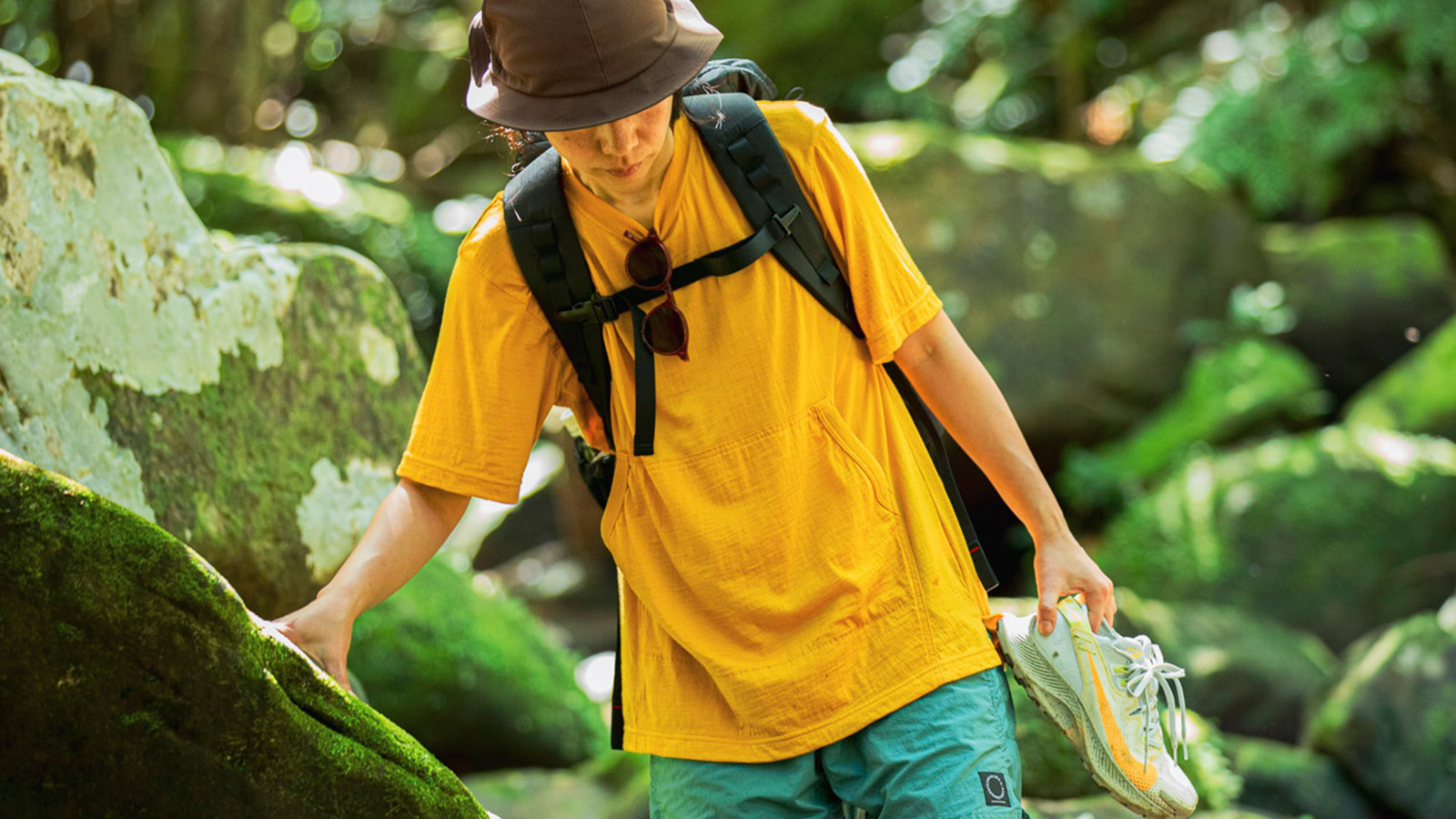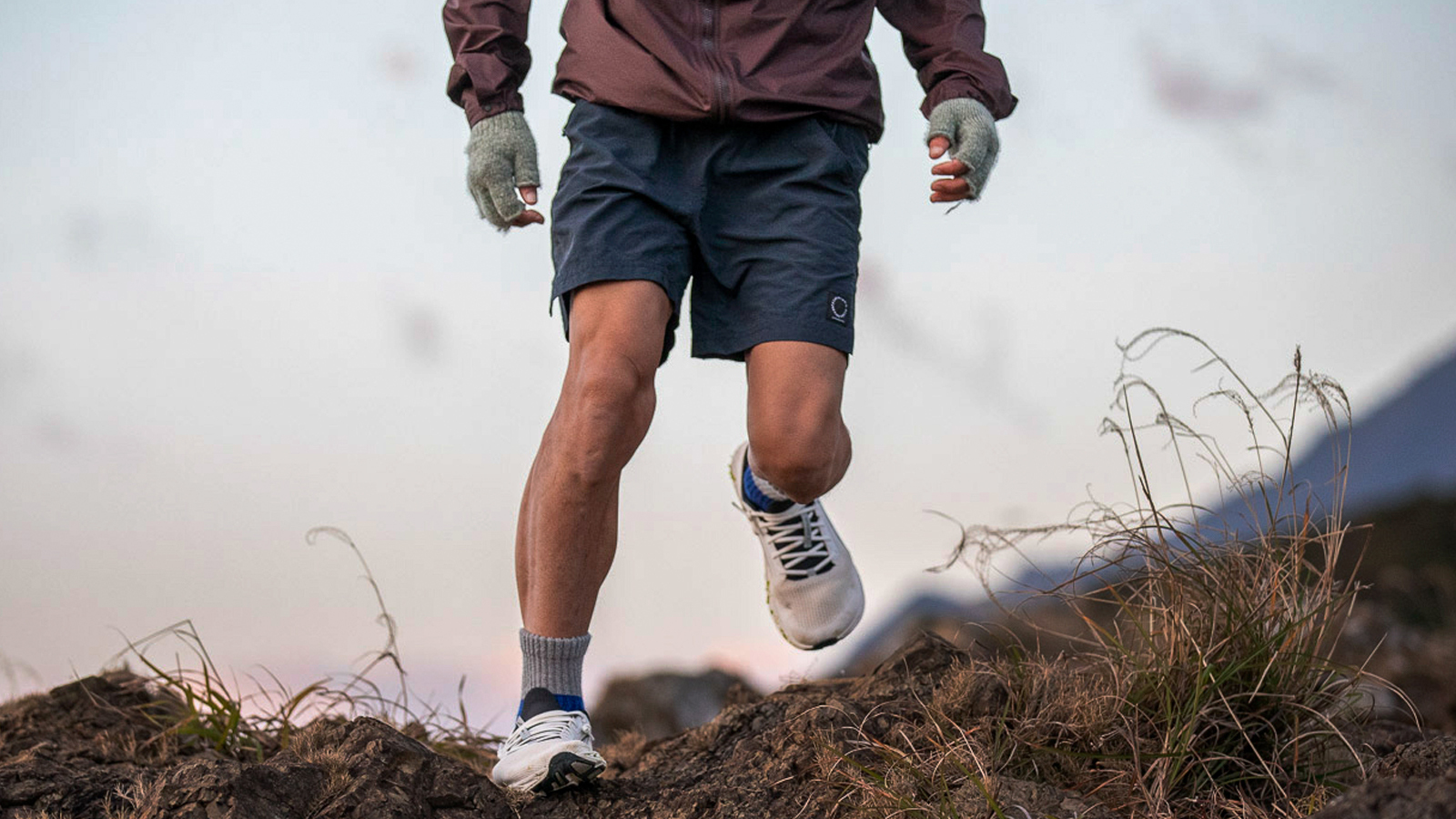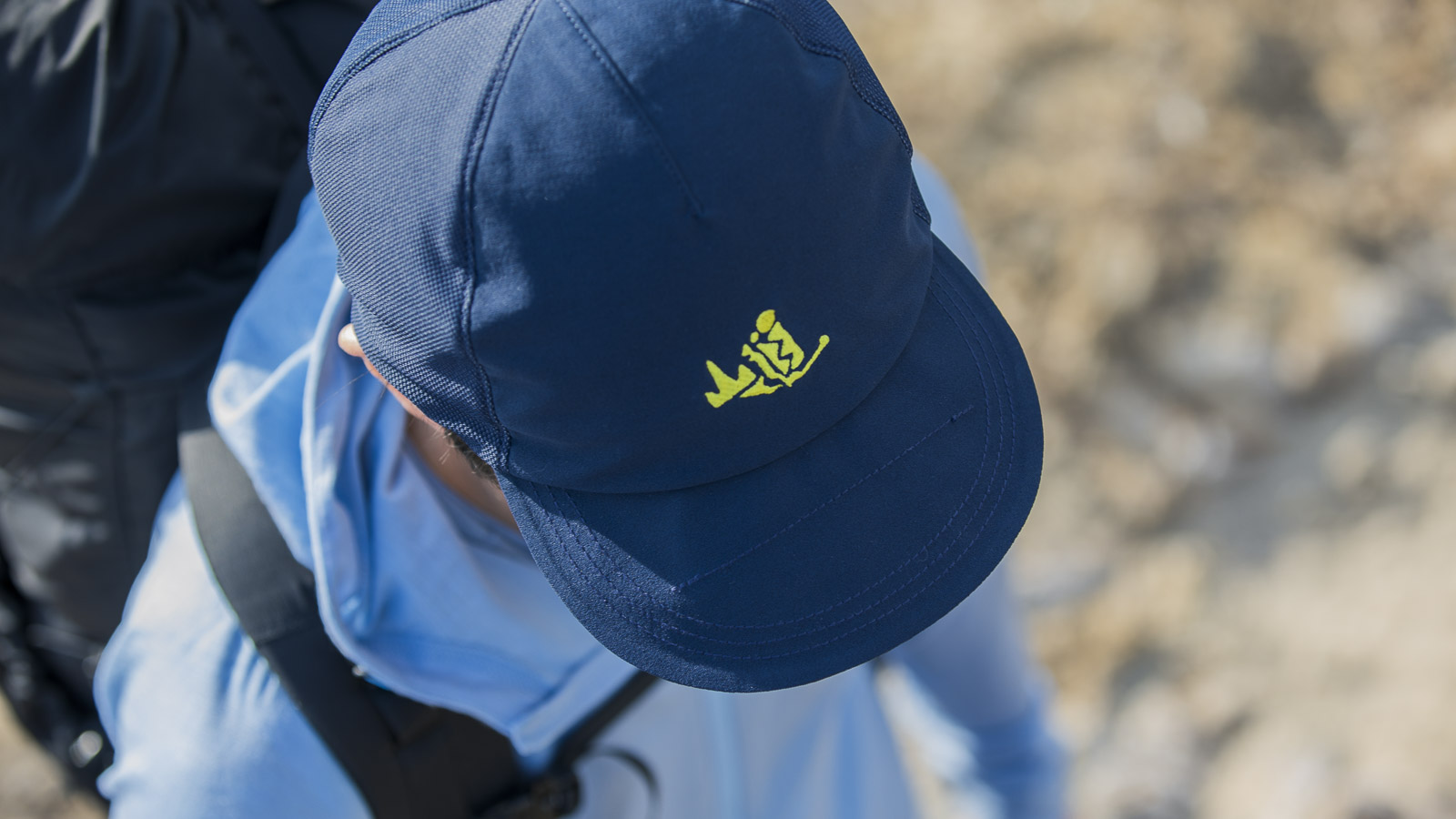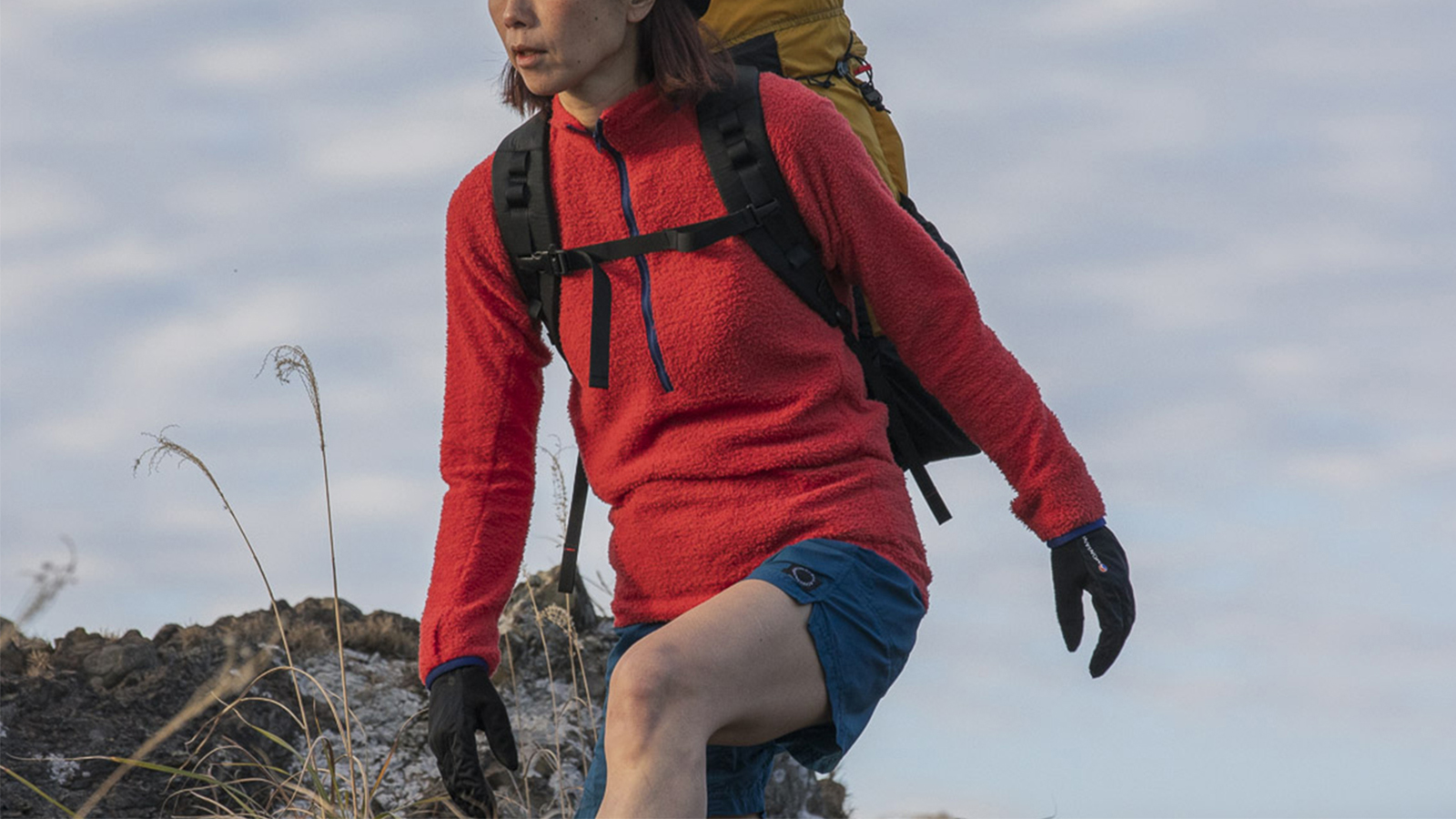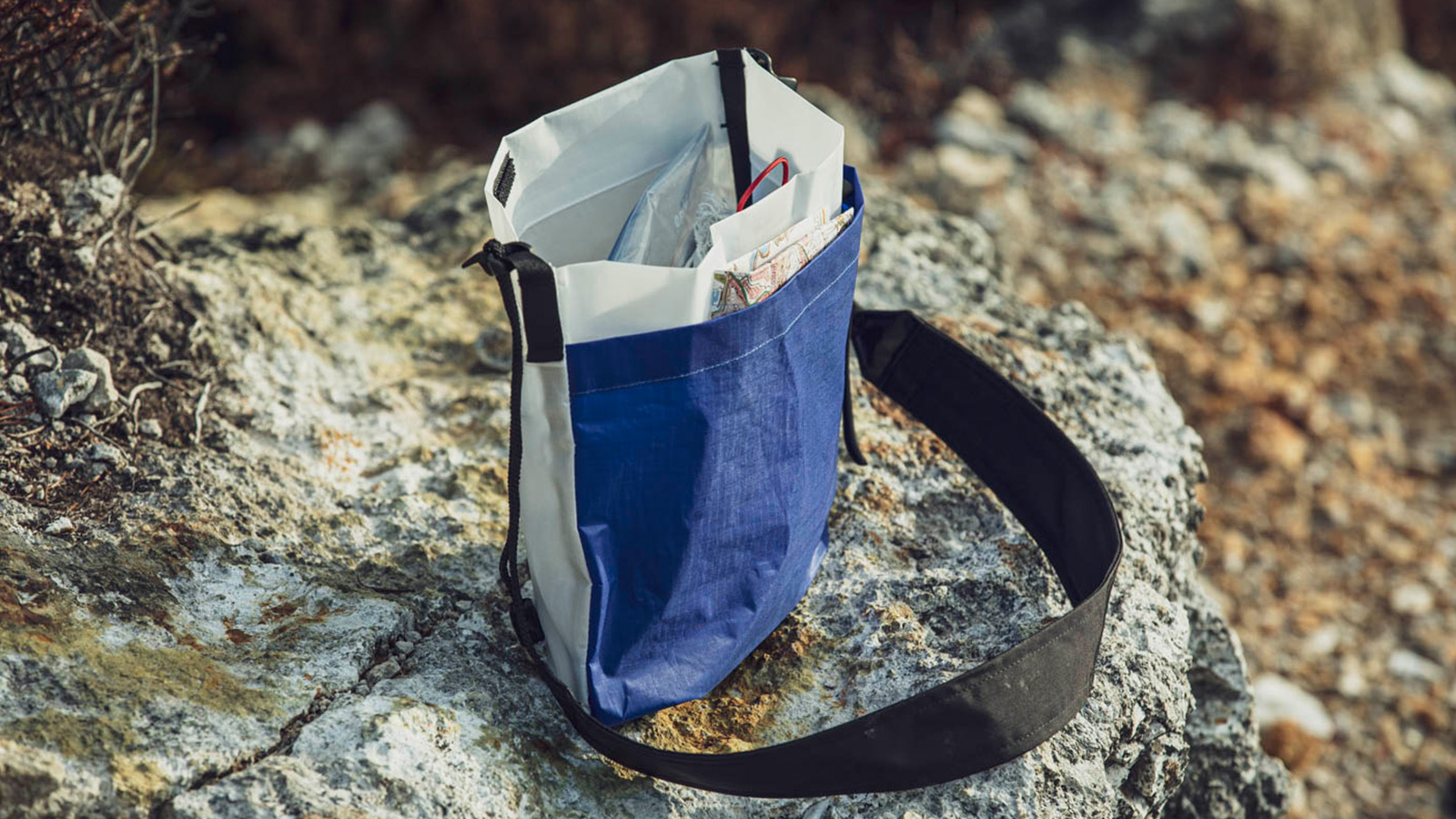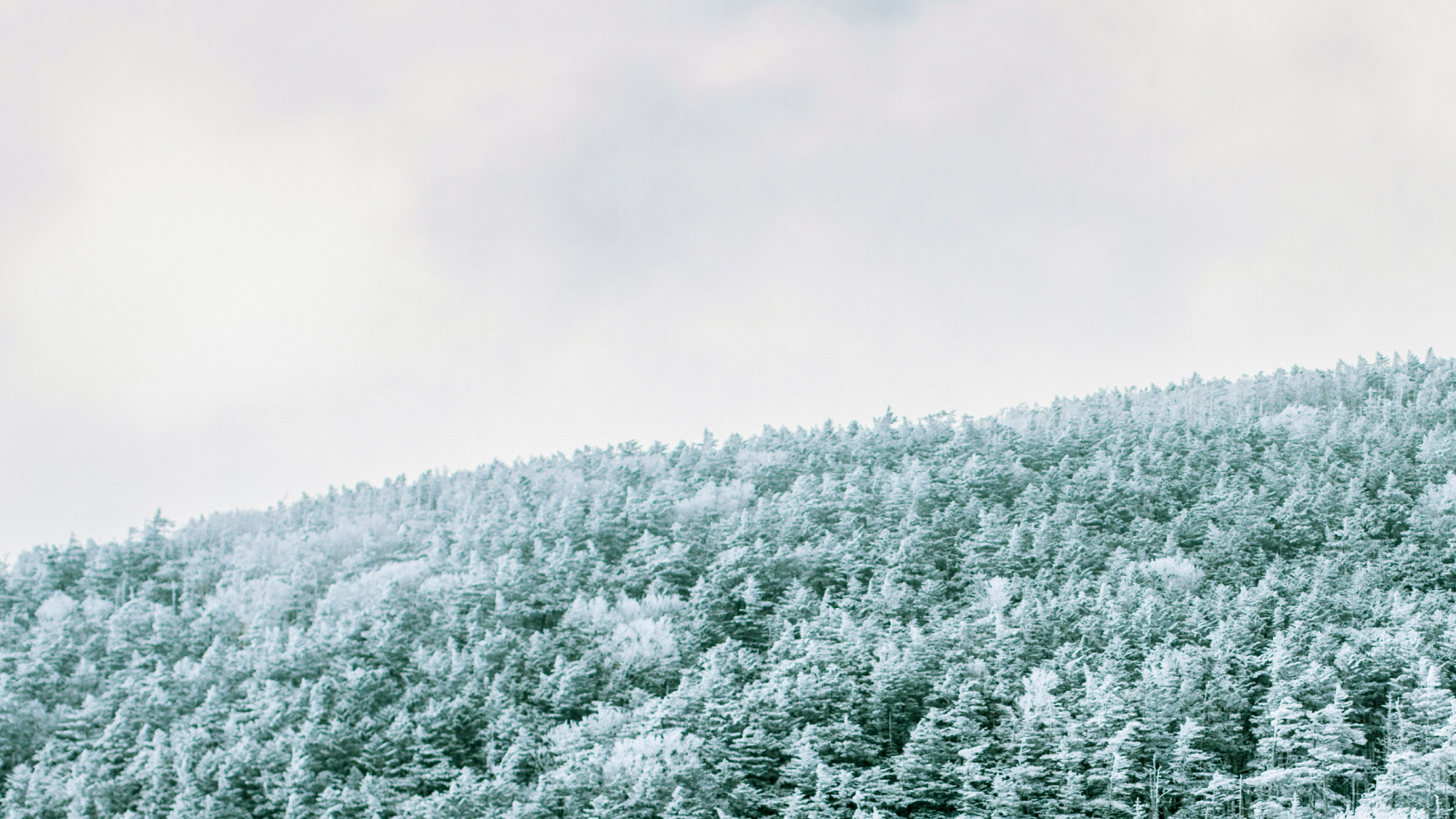HLC Shikoku Local Study Hike on Shikoku’s Pilgrimage Routes Iyo-ben Report
HLC Shikoku Local Study Hike on Shikoku’s Pilgrimage Routes Iyo-ben Report
Yamatomichi HLC, which is currently active in seven locations throughout Japan and Taiwan, conducts a variety of programs every day with the aim of creating a community connected by hiking. In this HLC Report, we will share the details of these activities.
This time, in late March 2023, we walked along the pilgrimage route (henro-michi) to 88 sacred sites where Kobo Daishi Kukai practiced asceticism, with Mr. Kosei Okazaki, an active monk who has appeared in our previous “Meet the My Neighbor Hikers” series, as our guest. This is a report on a local study hike in Shikoku by HLC.
This program included a talk by Mr. Okazaki and visits to temples and halls along a route that retains the atmosphere of the time when Kobo Daishi walked the pilgrimage route and is known as the “henro-togashi,” or the most difficult part of the route. However, the hikes took an unexpected turn as a result of the many people we met along the way. But perhaps that is what makes Shikoku such a place where “everyone you meet likes to talk (from the text). ⁉︎
The report was written by Ai Hino, a local collaborator of the “Yamamichi Festival 2023 – Shikoku Ishizuchi,” who usually works as a graphic designer and editor while organizing the local team. She is a graphic designer and editor who usually works as a coordinator of the local team. To deliver her overflowing love for Shikoku and the local atmosphere, we have asked her to report in her native Iyo dialect from Saijo City, so please enjoy her report!
What is a pilgrimage route?
First of all, what is a pilgrimage route? It is a trail that circles Shikoku, with a total length of approximately 1,400 km.
Originally, Kobo Daishi (Kukai, Odaishi-sama, a Buddhist priest who practiced asceticism in Shikoku during the Heian period (794-1185). Recently, however, the trail has become popular as a trail, and pilgrims (people on a pilgrimage) who look like UL hikers can be seen on the trail.
This time, we will walk the 8-km one-way route between the 11th and 12th temple, Fujiidera and Yakeyama-dera in Tokushima Prefecture, and the “Ipponsugi” cedar.
It is said that seven of the 88 pilgrimage sites are called “Pilgrimage Korogashi,” so called because the slopes are so steep that pilgrims can roll down them. The trail this time is… “the first and the last hurdle on the pilgrimage route starting from Tokushima”…what? Can you go?
I wonder how difficult this trail is for hikers. Even though I live in Shikoku, I have never been on a pilgrimage before. I was worried ⁉︎ and consulted with HLC Shikoku Ambassador Mr. Kanno before the interview.
He said, “Even grandma and grandpa’s pilgrimage is only a part of the way up. I think they will be fine. Let’s roll.
He replied reassuringly. Okay, let’s go for it!
The finest hospitality
The meeting place is called “Henro no Sato,” a rest area before Fujiidera Temple, the 11th temple on the pilgrimage route.
It seems to be a place where local people volunteer to run a hospitality center for pilgrims (a place where they are given drinks and meals free of charge).
There is a beautiful river around the temple, and for some reason, there is also a place that sells killifish, so it looks like a place where children can have fun and play. There is a pilgrimage center in my neighborhood, but it is not like this…. It’s amazing.
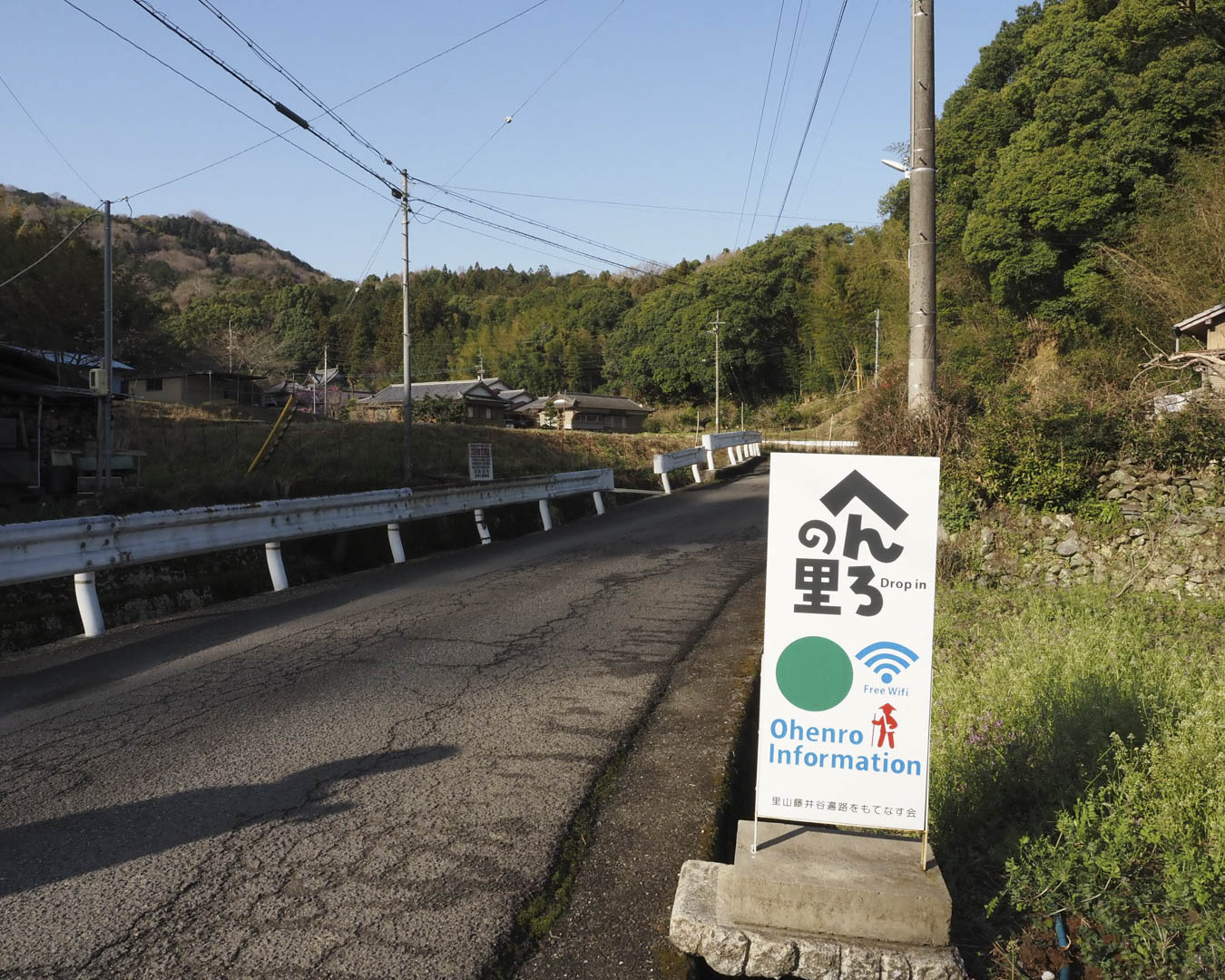
The pilgrimage route continues onward to the 11th temple, Fujiidera.
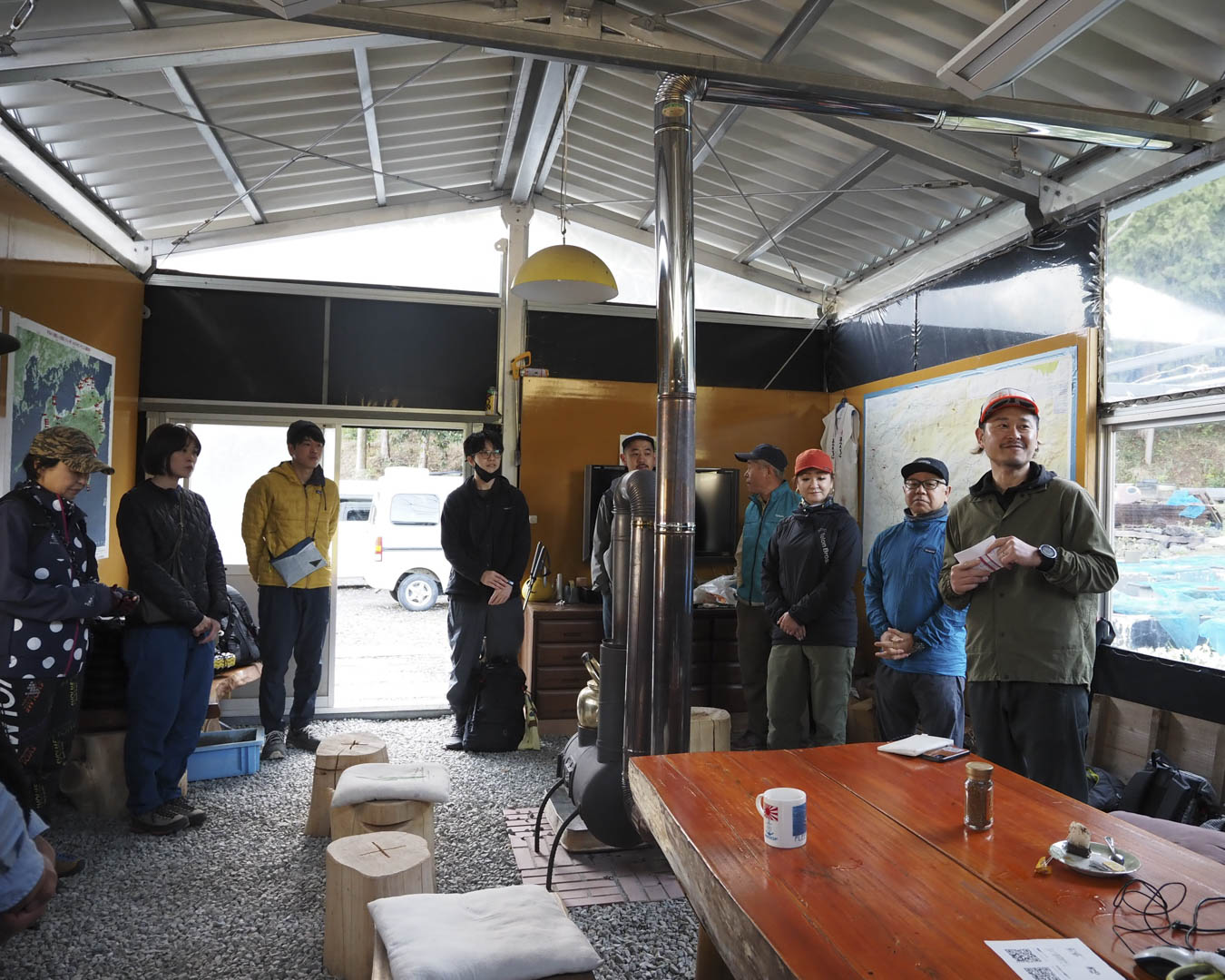
On the far right is HLC Shikoku Ambassador Tetsu Kanno.
I was thrilled when Hironobu Masuda, the manager of “Henro no Sato,” offered me a cup of coffee right away. HLC Shikoku Ambassador Mr. Kanno gave an energetic greeting to the group.
The main guest, Mr. Okazaki, and Hiroki Kimura of Yamatomichi, who was in Ehime the day before for a preliminary inspection of the Yamamichi Festival and arrived in Tokushima after a 200 km drive, were also introduced.
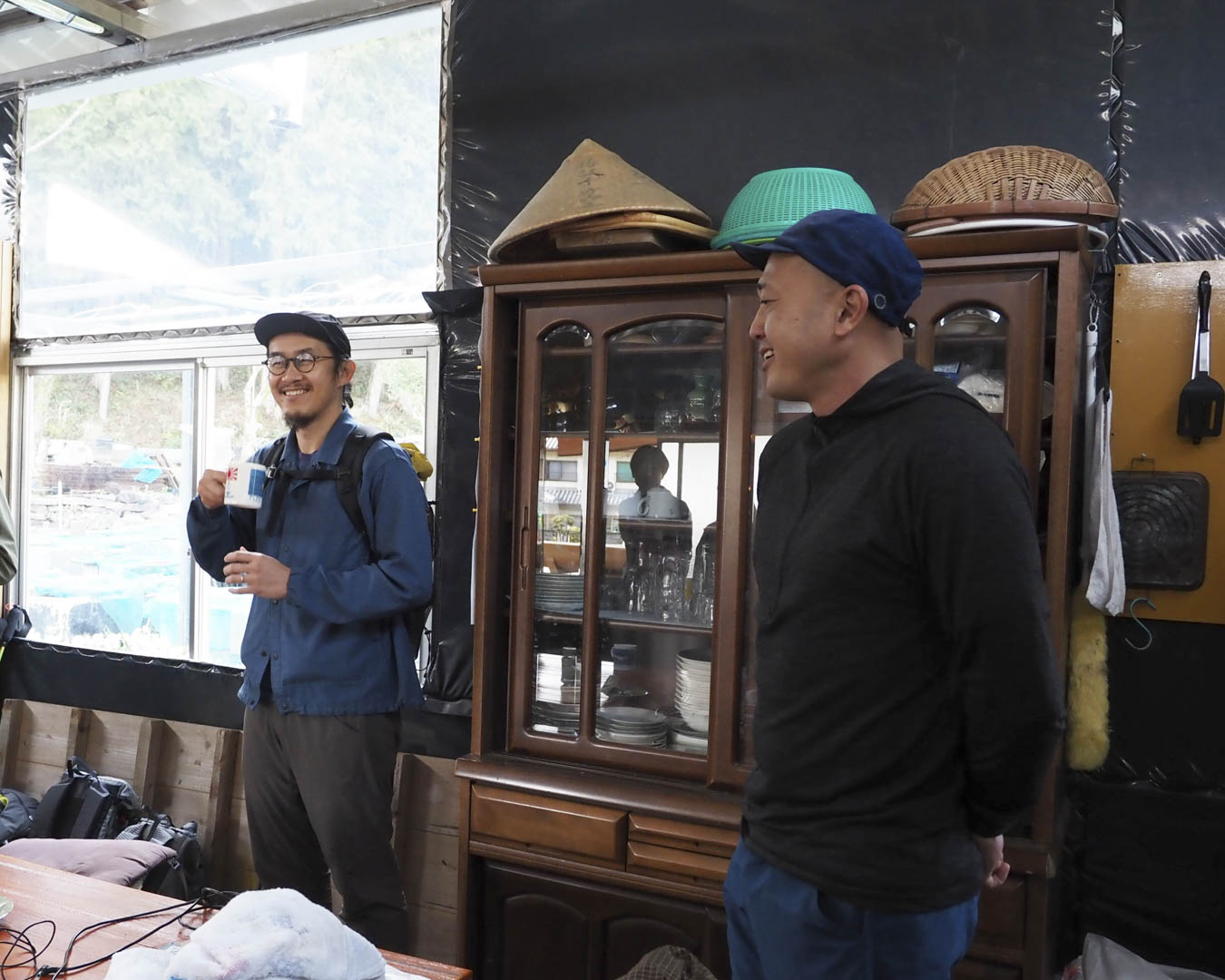
Kimura (left) and Okazaki-san say they have grown attached to Shikoku after commuting there for so long due to the postponement of the Yamamichi Festival.
Before setting out, Masuda-san introduced the route using a map. Energetic and well-spoken, Masuda-san tells us “the view from here is great” or “this part is a bit tough,” which makes it easy to visualize the route.
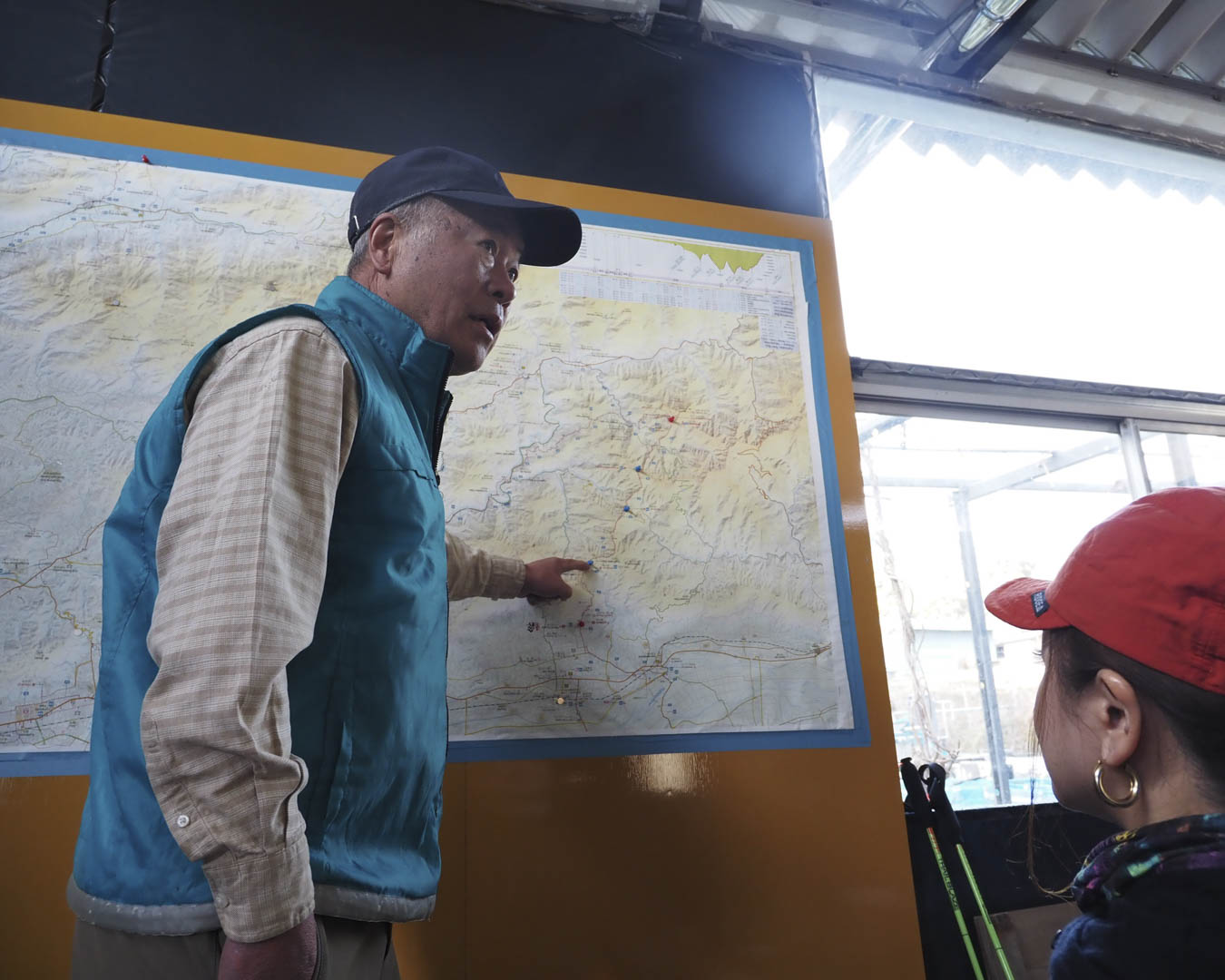
To make it easier to understand the route, the map has the north-south direction reversed.
He also tells us about the current state of the pilgrimage. “The number of pilgrims has returned to the pre-Corona level, at 7,000 per year. By the way, foreigners accounted for about 1/3 of the total before Corona, but now they account for about 40%” (according to the “Henro no Sato” survey).
Wow! I didn’t know that many people came.

During the briefing, pilgrims from overseas also visited.
Incidentally, this time we had participants from all four prefectures of Shikoku (Kagawa, Tokushima, Kochi, and Ehime). This is a rare occurrence, so it’s a lot of fun right off the bat.

Taichi Manabe, creator of “Hiker’s Gin.
Taichi Manabe, who will also be participating in the Yamamichi Festival 2023 as a member of the”Hiker’s Gin“at the “Local Market,” is also a member of this year’s event. “I had to participate in this event because it is in my hometown,” said Taichi Manabe, who came from Kamiyama, a neighboring town where the 12th temple, Yakiyama-dera, is located.
And so, it was off we went on the trail known as the pilgrimage route!

The full house was packed, and a total of 15 people set out.
Let's roll!
First, we paid a visit to the 11th temple, Fujiidera. This is a historic temple built by Odaishi in 815, and from here to Yakeyama-dera, the 12th temple, is the only part of the pilgrimage route that still retains the original appearance of the temple where Odaishi practiced his asceticism.
It was early at 8:00 a.m., but there were many pilgrims chanting the Heart Sutra at the sutra chanting place (where sutras are dedicated to Odaishi-sama). This is the kind of image I always have of Buddhist pilgrimage sites.
The way to go around the pilgrimage is free, and although some of the non-Shikoku residents may be surprised, it is not necessary to walk through the 88 temples. Many people divide their pilgrimage into sections, such as “GW (the first week of April) to visit certain places. You can use any means of transportation, including cars and bicycles. Tourists visit several temples by bus. I wonder how many temples this group will visit today.

A group of worshippers (right) and us.
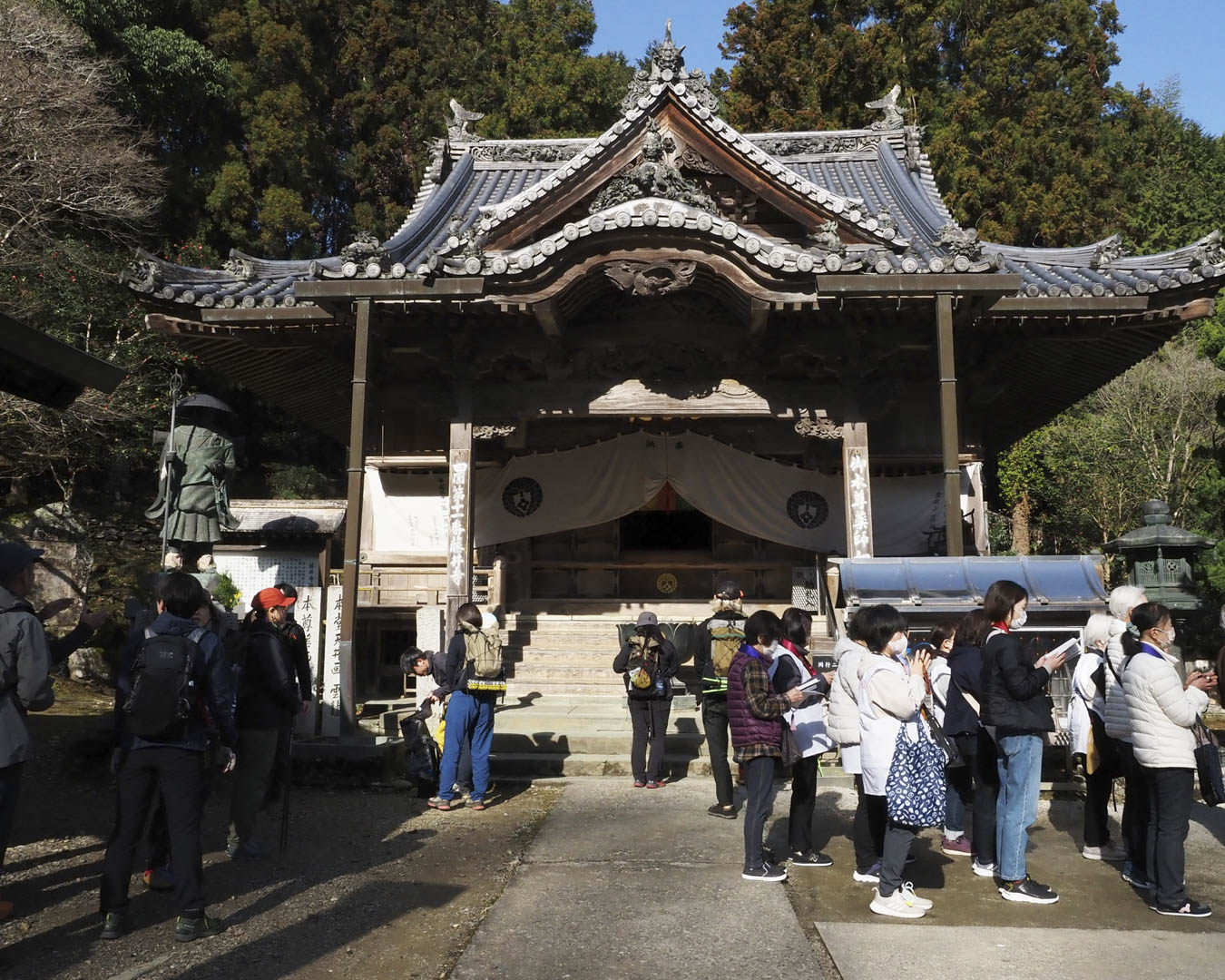
A.k.a. “kobo-san” (little priests). We often see them at each temple, but their faces seem to be slightly different. Really?

A statue of Kobo Daishi practicing asceticism. He is so cool.
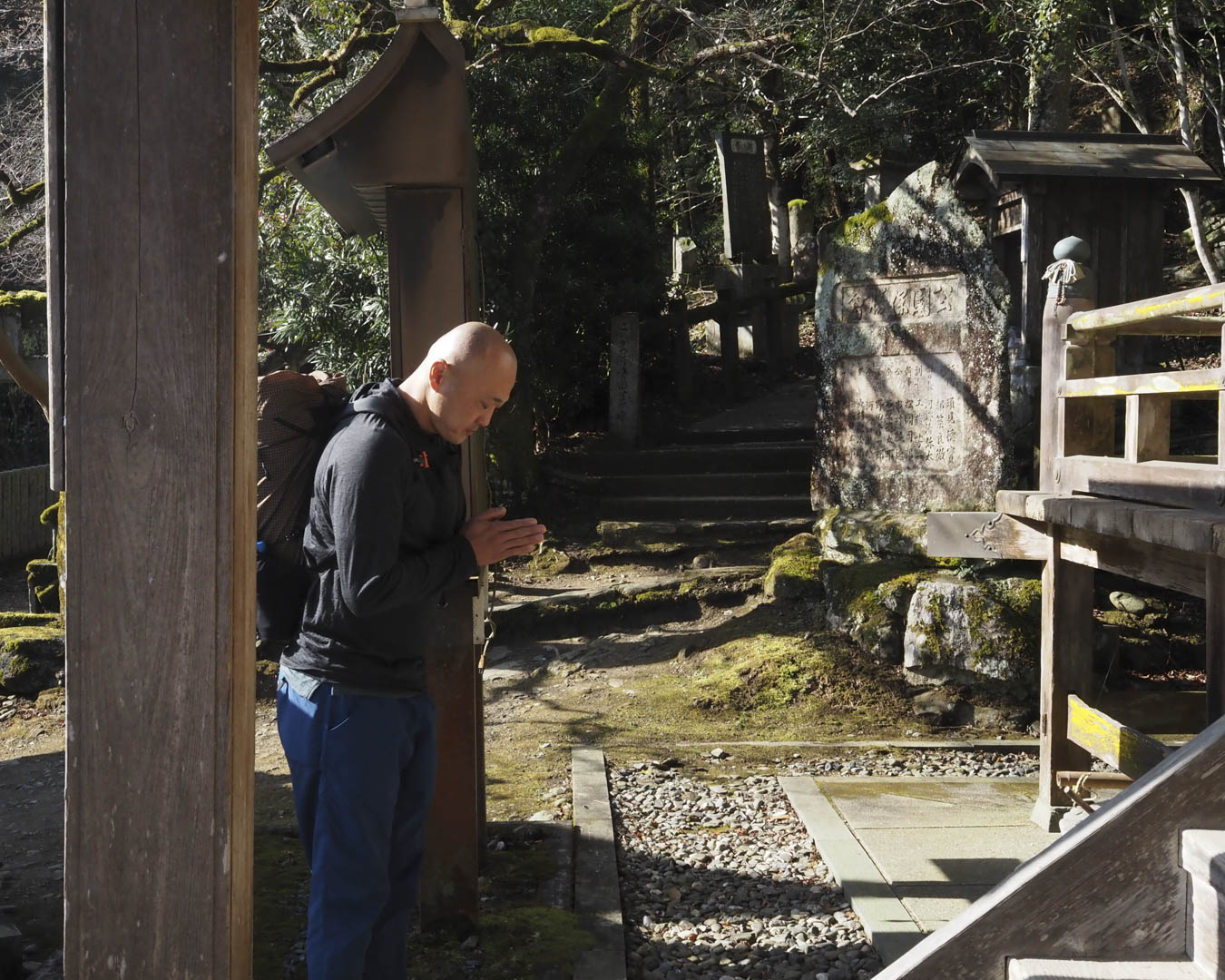
Hey, Mr. Okazaki, are you paying homage from the corner?
After passing Fujiidera Temple, we finally entered the trail, where many uniquely designed trail signs appeared. I was beginning to think, “I’m entering a pilgrimage path!
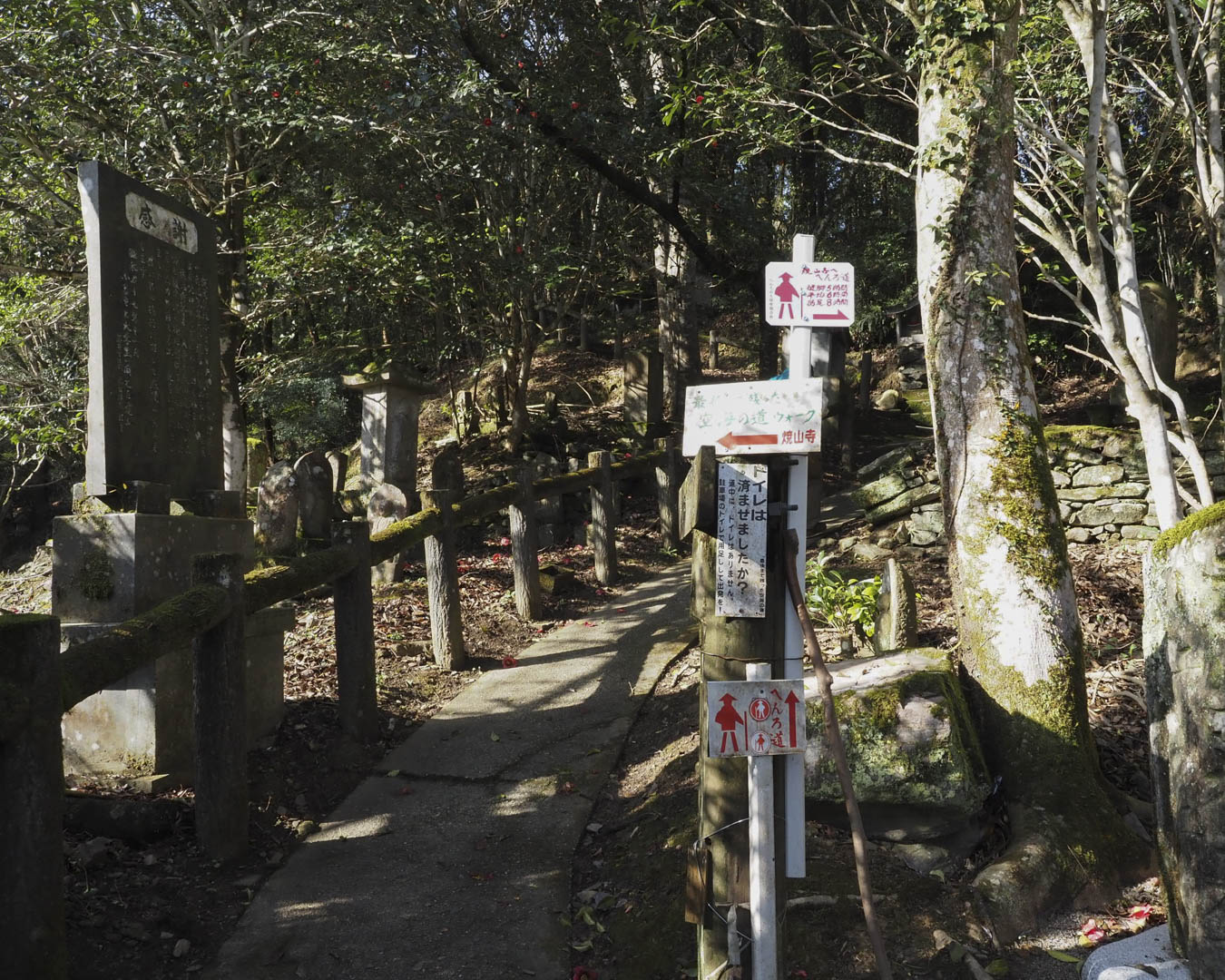
Nowadays, most pilgrimage routes are paved, but this is “the last remaining Kukai’s trail” from 1,200 years ago.
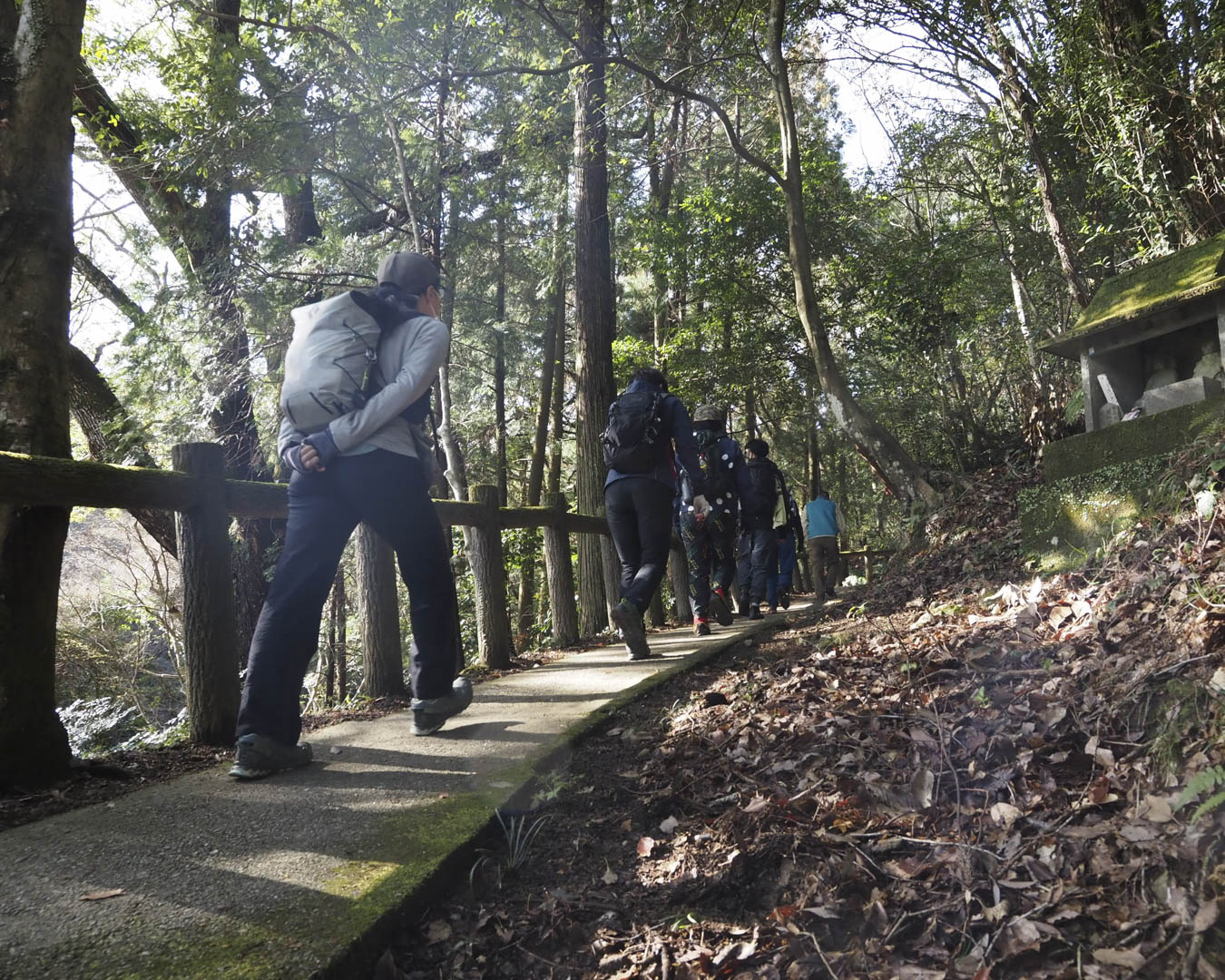
Small halls associated with Odaishi-sama stand side by side.
Mr. Okazaki, our guide, talks about Buddhism and the pilgrimage not like a serious lecture, but as if he is answering questions from the participants.
As a monk, I’m here to help you walk the pilgrimage, and I try to do everything with a sense of gratitude. I don’t act like a big shot just because I’m a monk. I do not call him “Kobo Daishi” or “Kukai,” but call him by his name. I live my life with this attitude. Even if someone speaks one-sidedly, different people take it in different ways, so I hope you will ask me anything you want along the way.
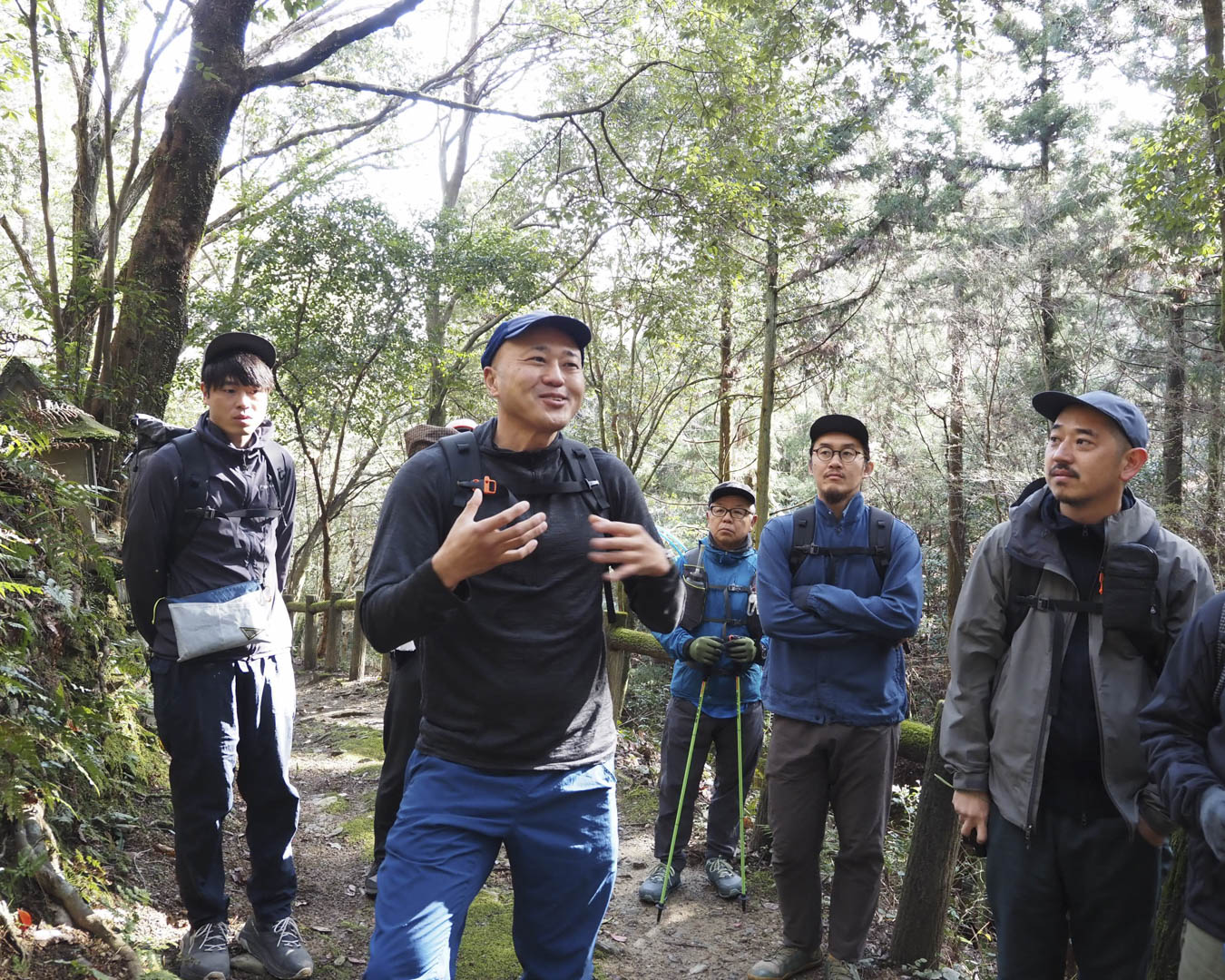
He talks as he walks and sometimes stops to tell everyone. Mr. Okazaki told us that he chose this route among the Shikoku pilgrimage routes partly because he often walks and runs here as he helps out at a nearby temple and partly because he wanted everyone to know about Masuda-san’s activities.
Masuda-san, who walked with us, also said, “Okazaki-san is different from ordinary monks. He has a different point of view, so we are always learning from him,” he said with a laugh. What a good relationship!
The pilgrim’s path finally entered the “Henro-korogashi!”
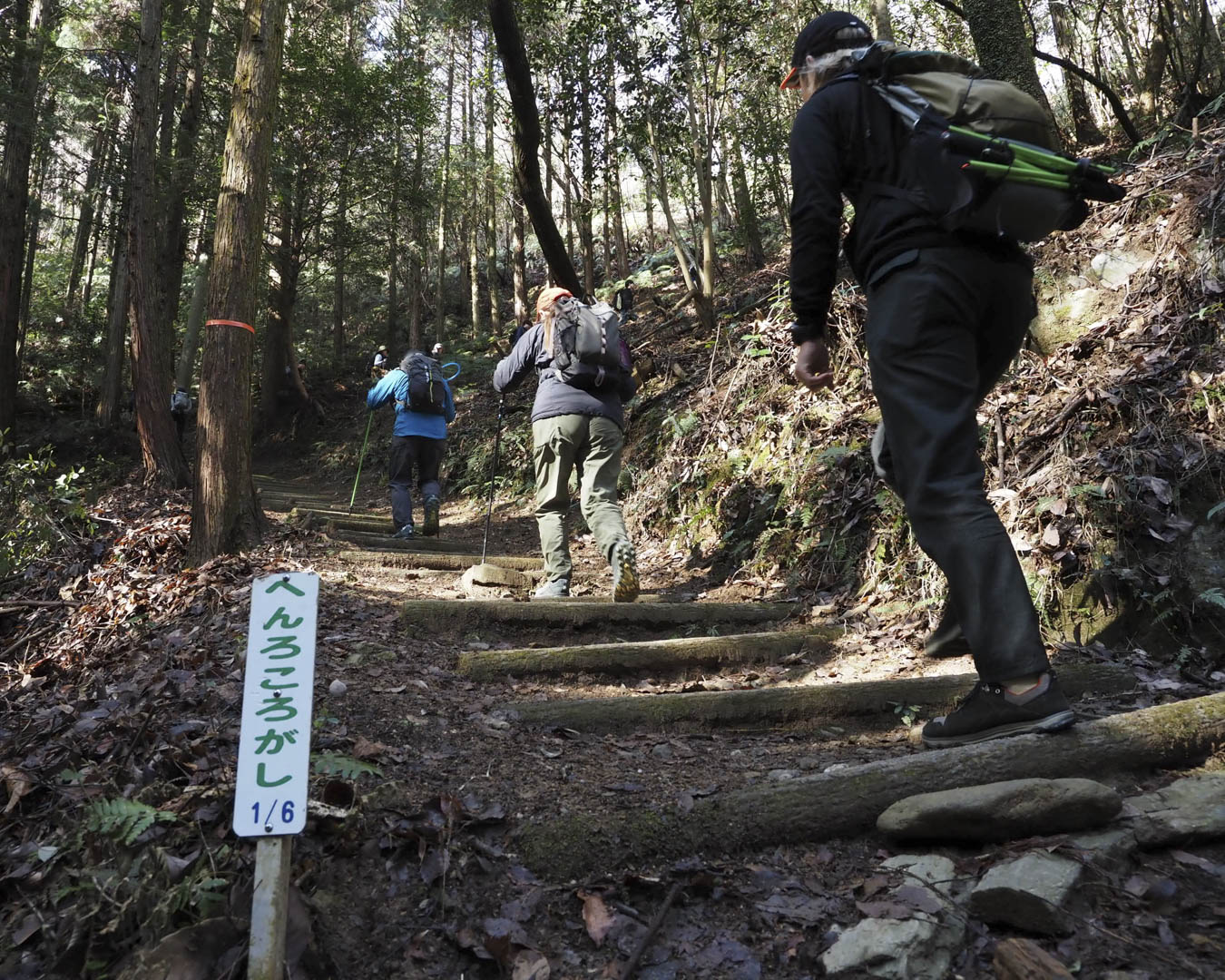
There are six steep hills…
I guess “henro-koroogashi” doesn’t mean the entire route between Fujiidera and Yakeyama-ji, but just a part of it!
It’s interesting to see all the different signs, and it really prepares you for the journey. From now on, we will see all kinds of signs and trail signs. It feels exotic.

A steep, winding climb.
Fifteen minutes after we started walking on the “Henro-korogashi” route. The trail is quite steep. Even so, the trail is much better maintained and easier to walk than I had expected.
But it must be difficult for pilgrims with heavy packs and those who are not used to trail, so be careful.

After passing a good vantage point and following the stones and signposts, we come to the first rest stop, the Hatsuyama Resting Area. Hey, someone is here!
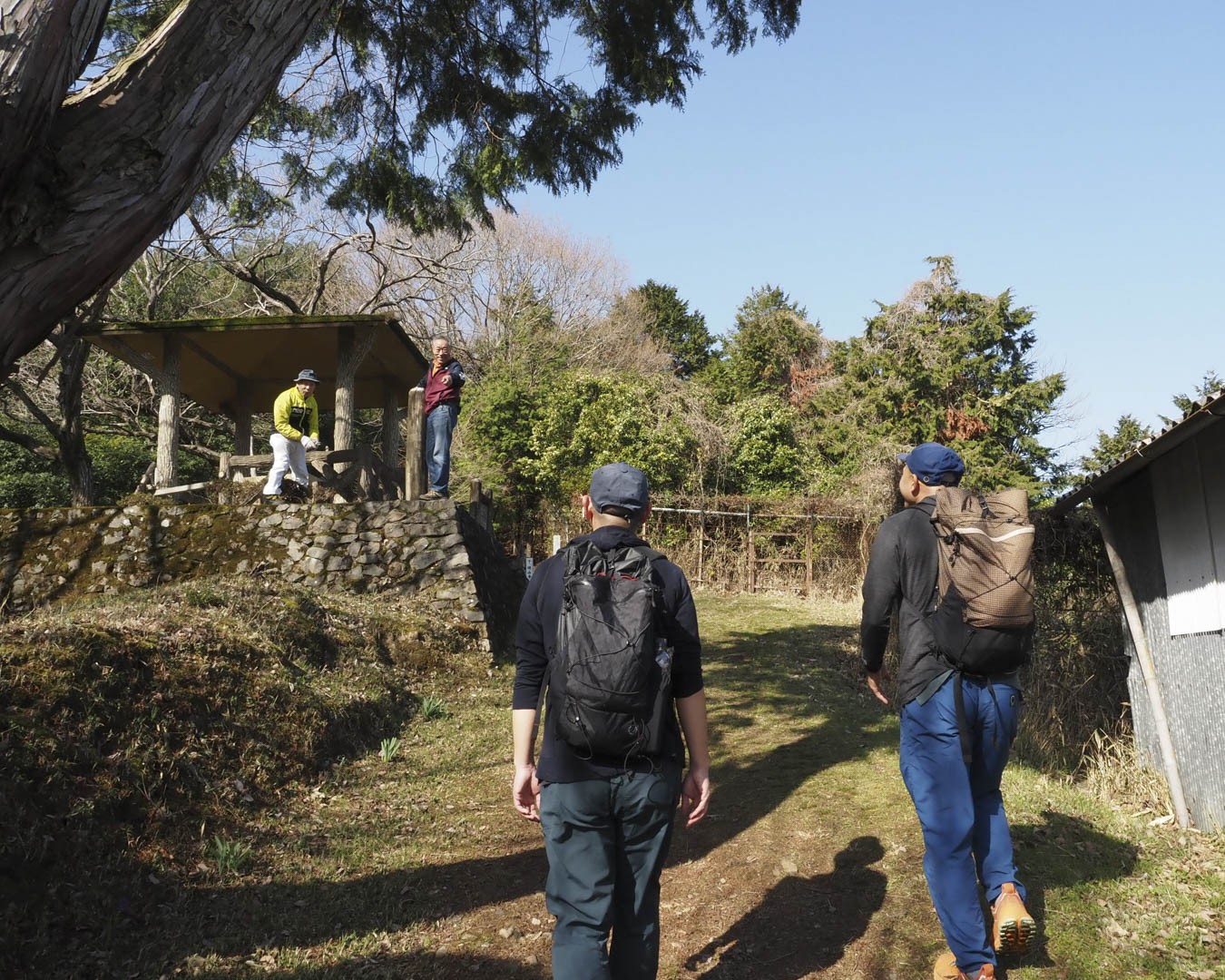
Local old men who maintain the pavilion and surrounding area were well known to Mr. Okazaki and Mr. Masuda.
Masuda-san smiles as the old men tease him. Everyone is smiling.

From the left, Takashi Kondo and Hiromi Karasumi. Hino is curious about them.
I asked them about it, and they told me that they clean the area from Fujiidera to here almost every day. Isn’t that amazing?
The chief priest says to me, “I’m so thankful to you,” he says.
I have never heard such words from a priest. Yes, they go there every day for the pilgrims, and they are all volunteers.
In Shikoku, where the population is small and there are few large mountain lodges, many of the people who maintain the trails are volunteers. Many of them are elderly seniors. Every trail has people who take care of it and make it safe to walk on, but we should be able to do something too….
I was talking with the old men, and we were running far behind. As I dashed after them, I saw messages of encouragement for the pilgrims at their feet and above their heads.
This gave me imense gratitude for the trail!
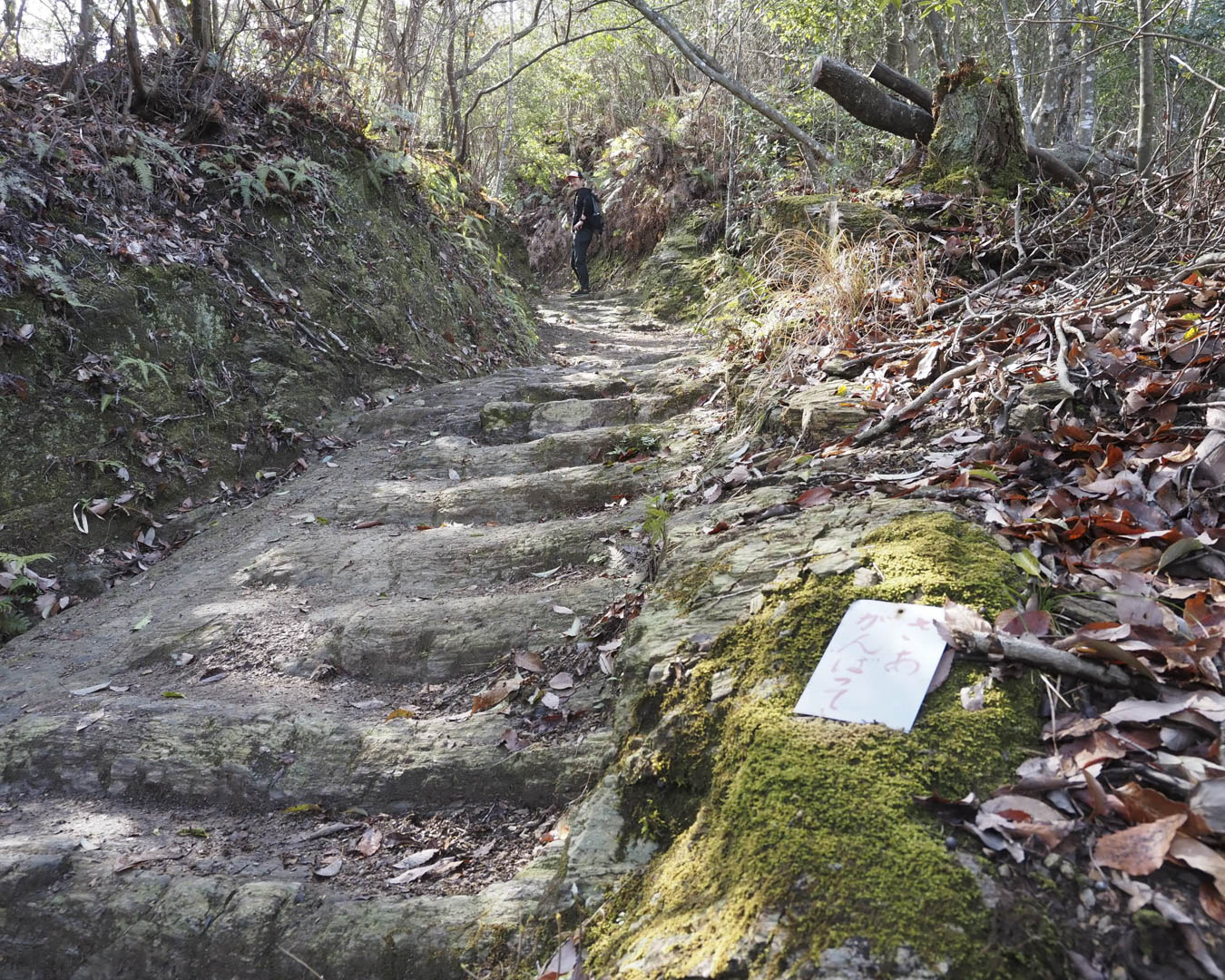
Come on, keep up the good work!

You are always accompanied by two companions on the Shikoku pilgrimage.
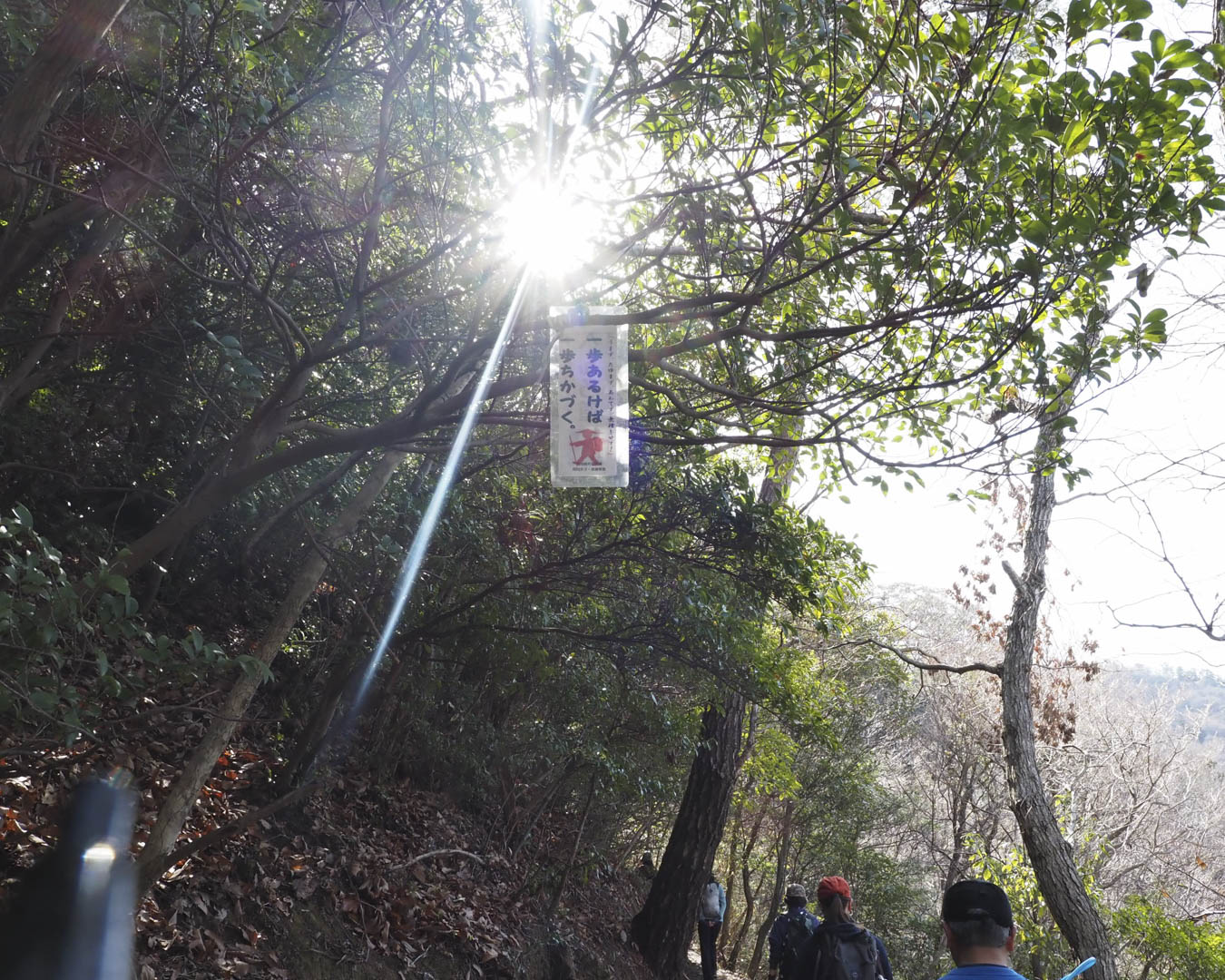
I caught up with everyone.
I asked Okazaki-san how he deals with this pilgrimage.
He replied, “I always walk from Fujiidera to Ipposugi, maintaining the entire route. It takes me about an hour and 20 minutes to reach Ipposugi.
Ha, ha! The course time this time was 4 hours including breaks.
For the pilgrims, this is their first time on the mountain path, and there are many who are too weak to move due to hunger. I treat them by giving them my own rice balls or daifuku (rice cake). Some of them don’t even know that they are exhausted.
Many of them are not hikers to begin with, aren’t they?
When I give them daifuku, some of them say, “I can’t walk anymore, so I’ll call a cab right away,” but then they get better and go straight to Yakisan-ji. It’s not so much that I’m trying to accumulate virtue, but rather that I’m happy that they are happy.
There are also a lot of foreign pilgrims.
I often walk and talk with them and feel like I am traveling abroad (laughs). (Laughs.) Many foreign visitors enjoy the scenery of Shikoku while facing their own hearts. On the other hand, I have the impression that many Japanese people try to make the rounds as quickly as possible, concentrating only on the fuda-sho, or saying that it is too hard or tough. Many foreign pilgrims have traveled to many countries around the world, and they often say that the pilgrimage is the best way to communicate with people, to enjoy a noiseless natural environment, to be safe, to spend a lot of time in prayer, to feel at ease, and to develop compassion for others.
How wonderful. What a proud thing to say. If I were to make a pilgrimage, I would like to spend some time thinking about it while walking slowly.
After a series of gradual climbs and flat paths, we passed the second rest stop, Nagato-an, and continued through the forest, where the view suddenly became clearer.

From the rest stop, we could see the view of Yoshinogawa City, which runs east to west through Tokushima Prefecture. In the back are the Sanuki Mountains, the border with Kagawa Prefecture.
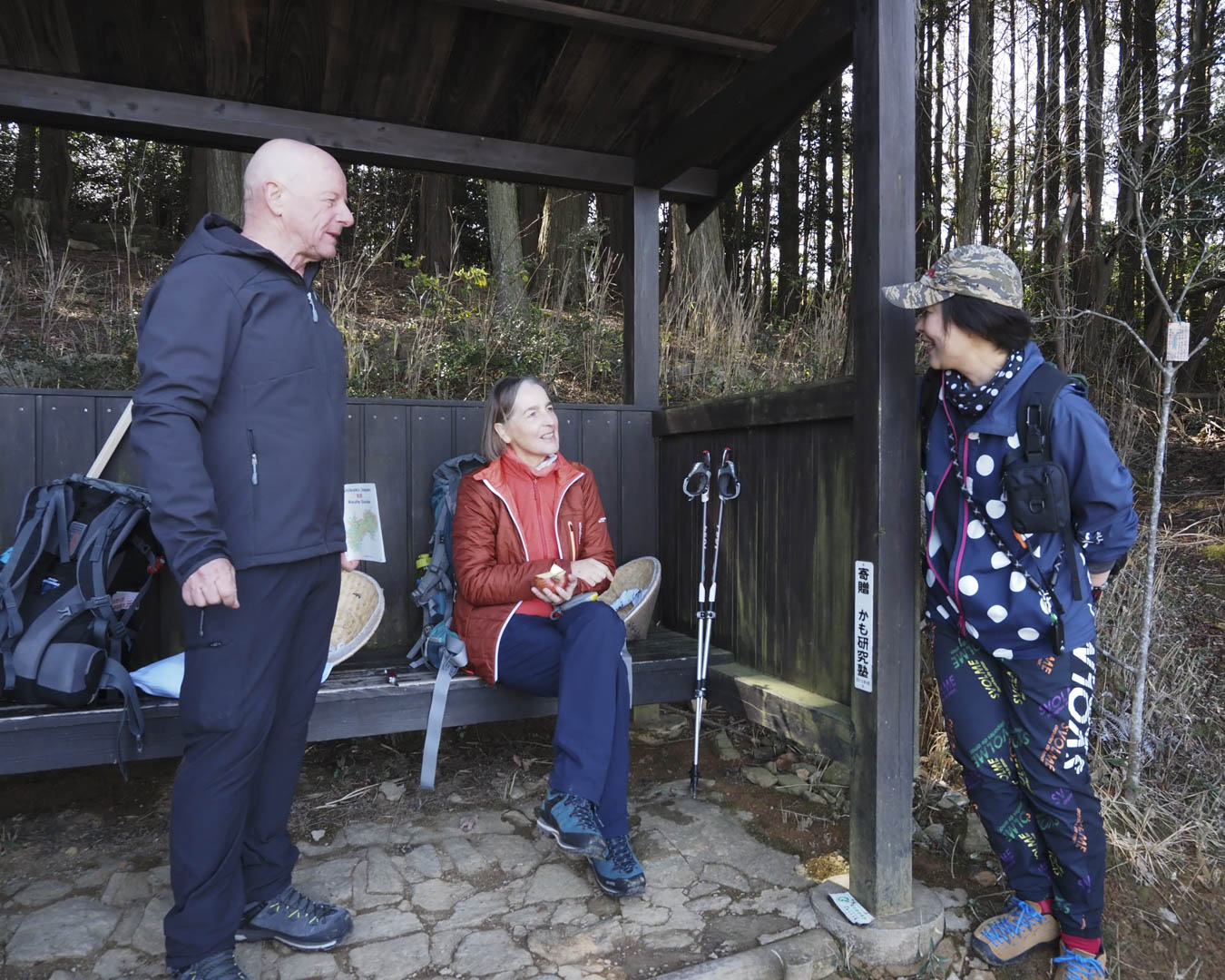
A member of the group converses in German with a German couple.
We were a bit nervous when we heard about the steep pilgrimage route, but for us hikers, it felt like a fresh trail where we could experience the pilgrimage culture. The pilgrims in the olden days had a different story to tell.
In the Edo period (1603-1867), the pilgrimage became popular among the general public,” Masuda-san said. Masuda said.
Around 1650, Shinnen-san (“father of the pilgrimage” and “founder of the Shikoku pilgrimage”) opened this trail, and a guidebook called Shikoku Henro Michi Shirube (Shikoku Pilgrim Path Guidebook) was published, along with trail signs. What had been a path for ascetic practices became popular, and people from all walks of life began to walk it.
I asked him, “Are the graves you sometimes see like those of people who died along the way? I asked him, “Yes, you see it just here. It has the date and address engraved on it. It says “Usa,” which means he was from Oita.
From Oita in the Edo period…he must have been very prepared.

The grave has the words “Usa-cho, Usa-gun, Buzen Usa-gun” written on it.
In those days, when transportation, food, and of course gear were less developed than they are today, walking the Shikoku pilgrimage route meant death. People used to wear white clothes so that they could be buried if they fell ill or died along the way. The background of the pilgrimage was completely different from today.
Even today, in 2023, when I see such things, I am reminded that life and death are very close to each other. I think this may be connected to the indigenous and mysterious atmosphere of Shikoku.
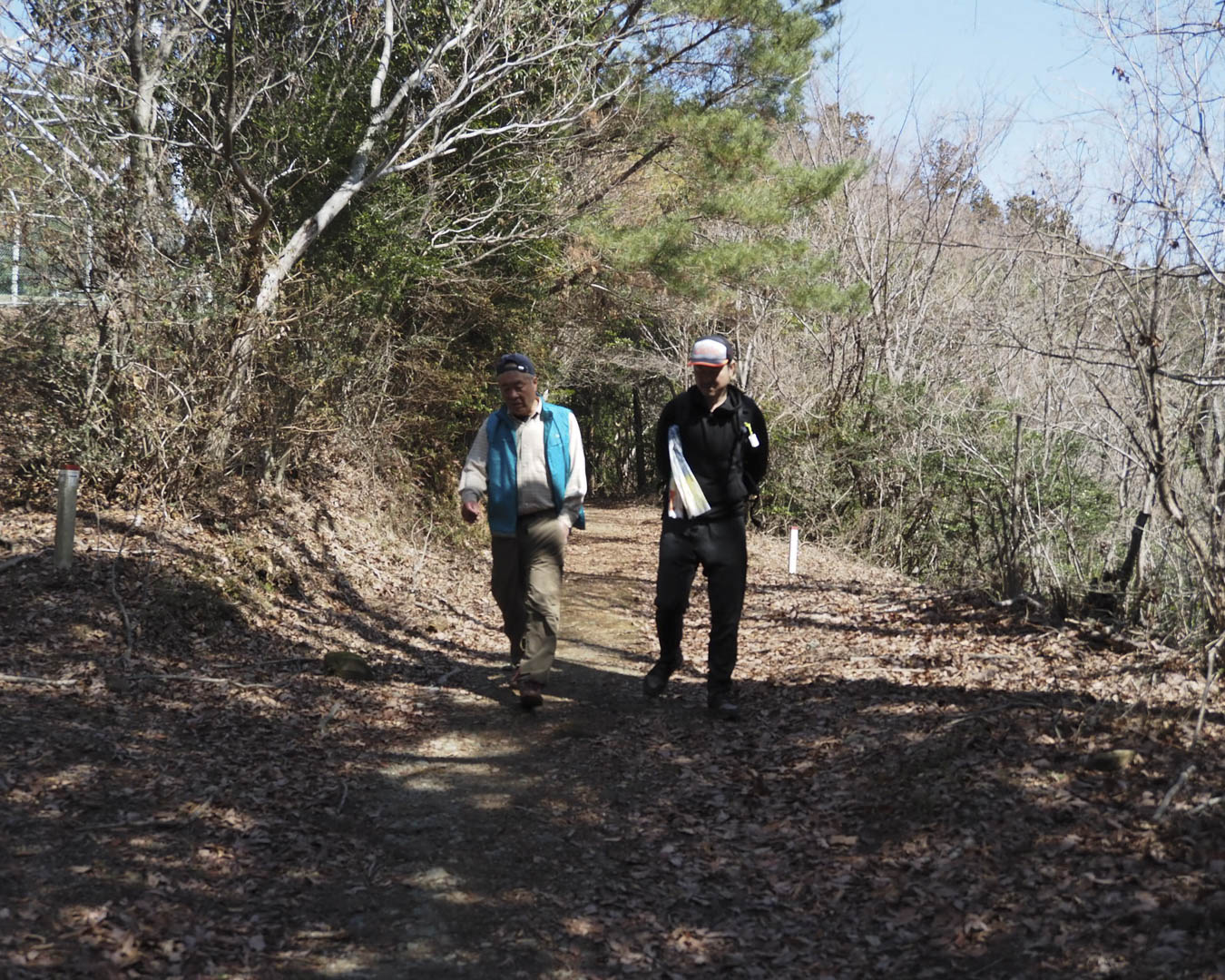
Looking back, I noticed that Masuda-san and Kanno-san were walking around talking to each other all the time. I wondered what was going on.
We stopped at the next rest stop, Ryusui-an (6.5 km from Fujiidera).
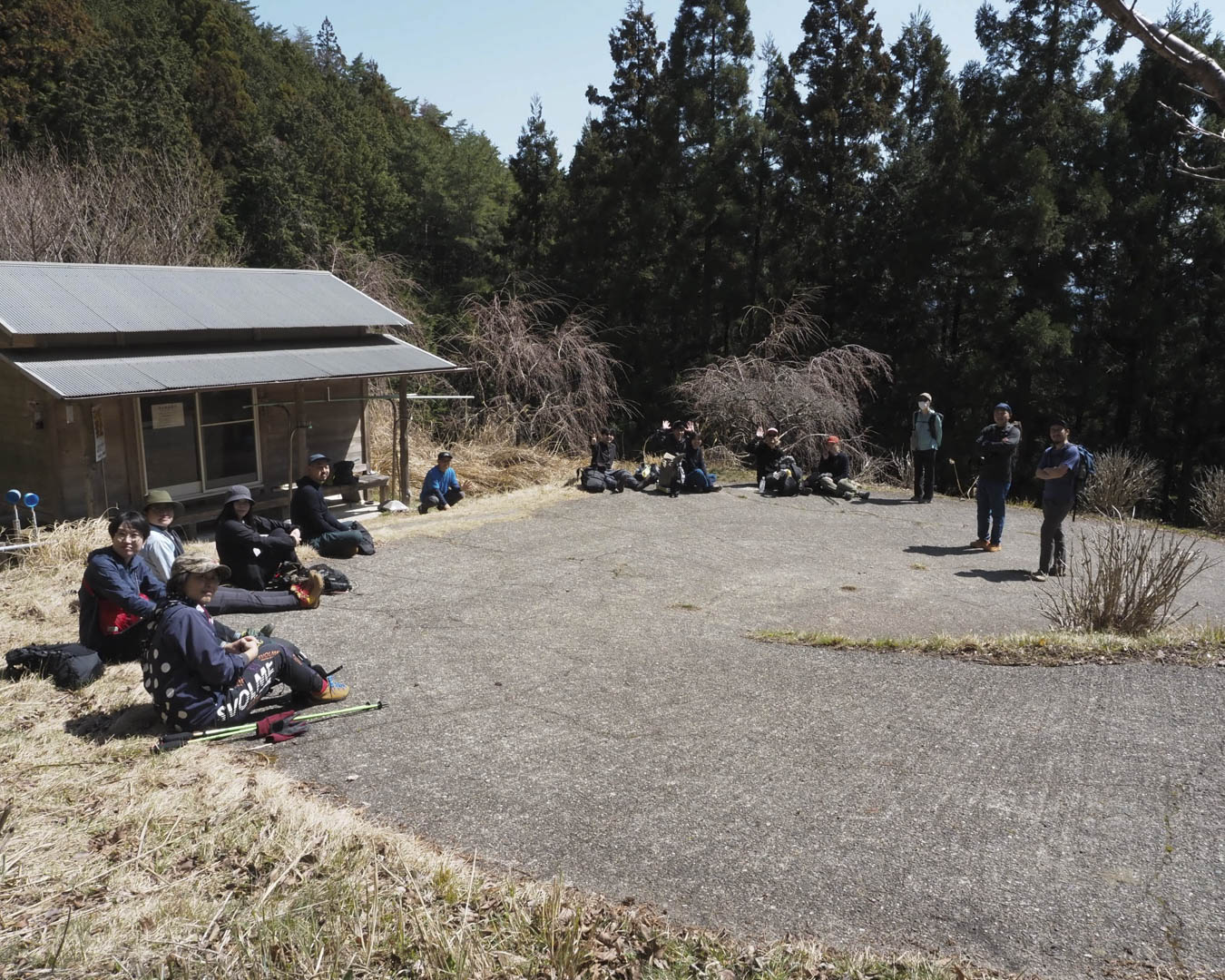
Rain was forecasted, but it was a beautiful sunny day.
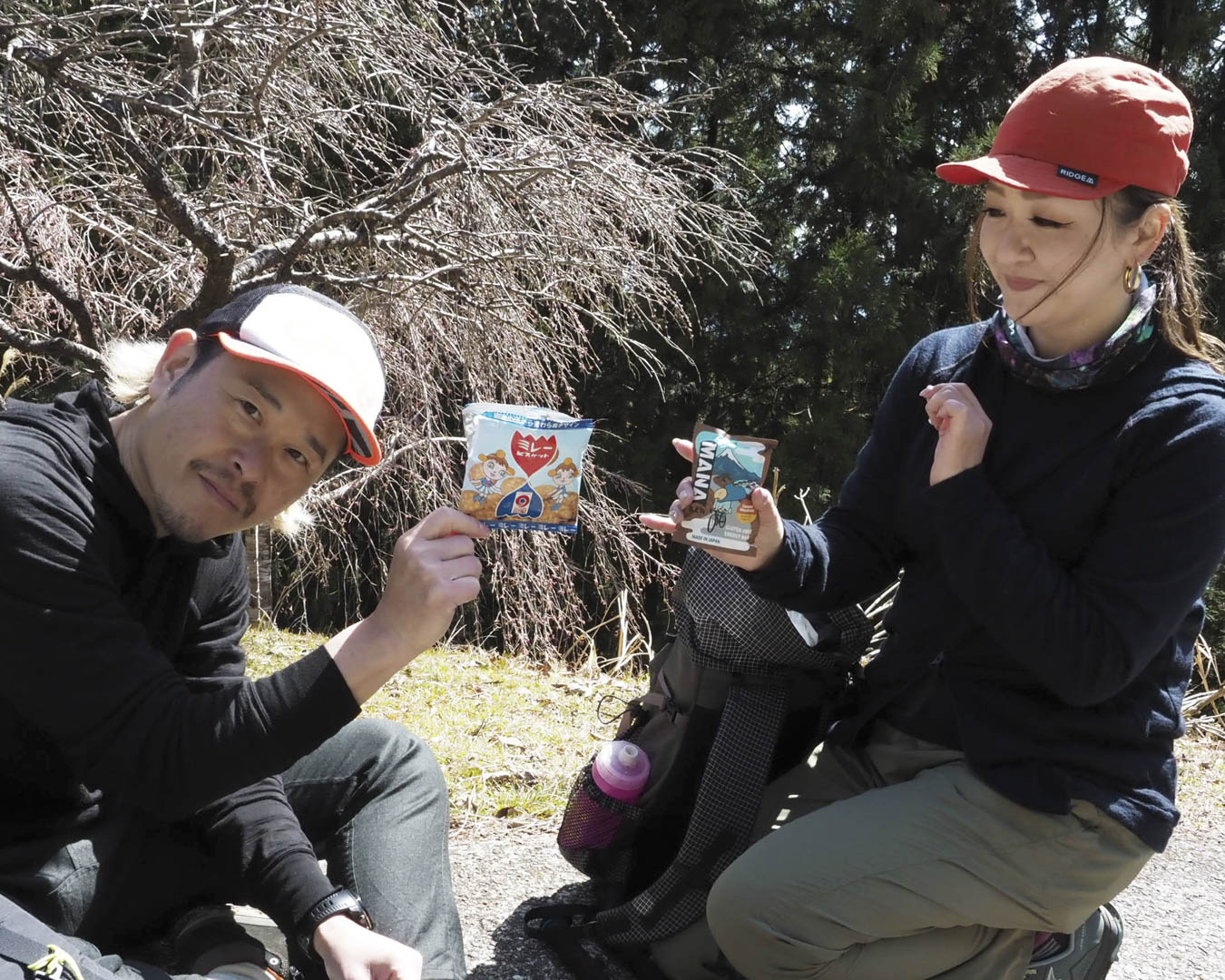
Ambassador Sugano-san, owner of Matsuyama’s outdoor store “T-mountain,” with staff member Kaori-san. Mr. Kanno is holding a “Millet,” a confectionary from Kochi.
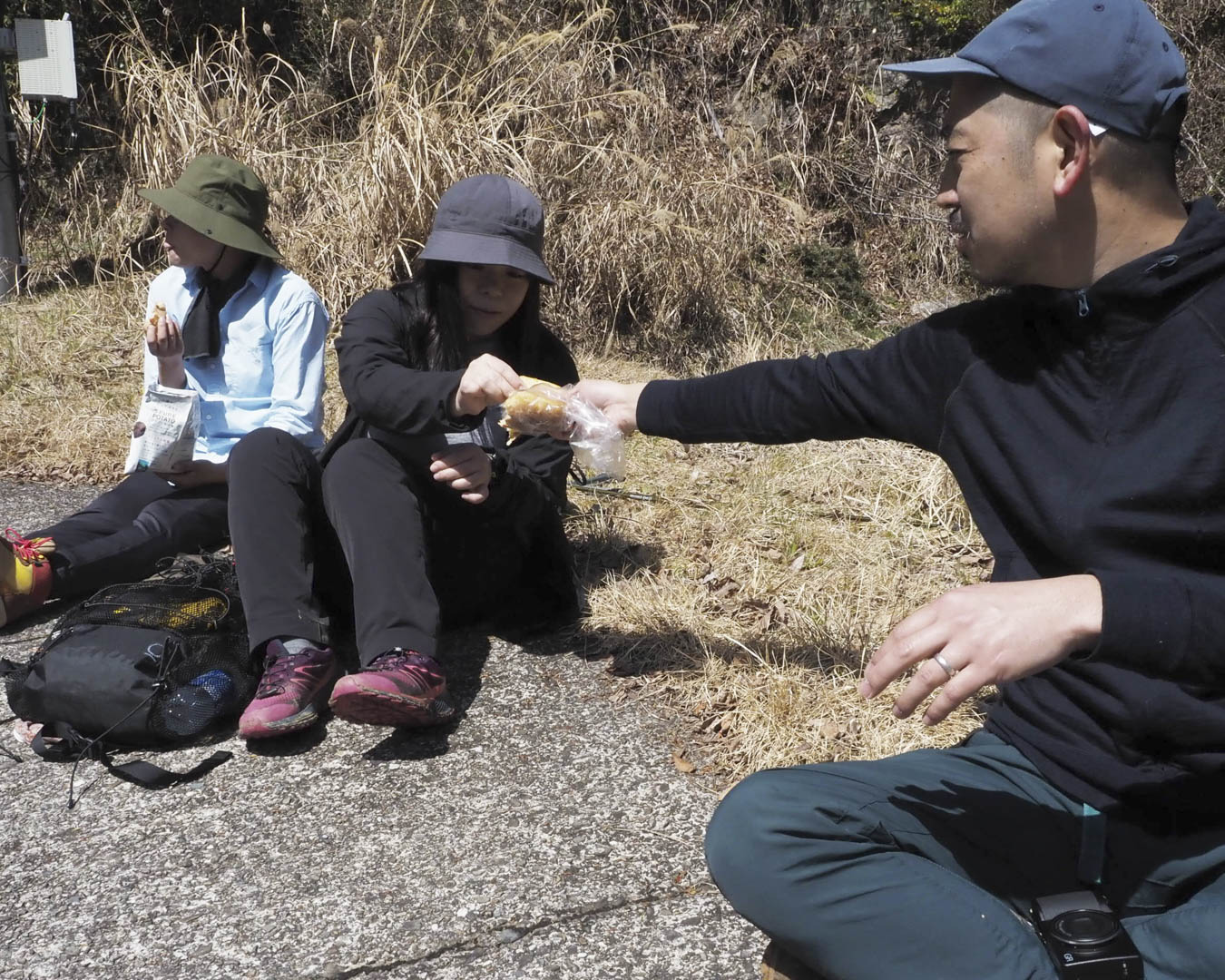
We share a loaf of bread from “Kamapan,” which is owned by Mr. Manabe and his staff. Mr. Manabe is so kind – the bread is delicious!
Everyone I meet loves to talk
Next, I met a soloist with light steps.
We started with a “Hello! As if as part of a self-introduction, the old man said, “I have completed eight rounds of the pilgrimage in 30 years. That’s a long time to talk about it. That’s a long story.
Today was my 60th round trip between Fujiidera and Yakeyama-dera. It’s a really nice trail. We left Kamojima (Yoshinogawa City) at 2:30 in the morning. I was so taken by the charm of the pilgrimage that I had no choice but to walk. And after walking, I can’t help but feel energized.
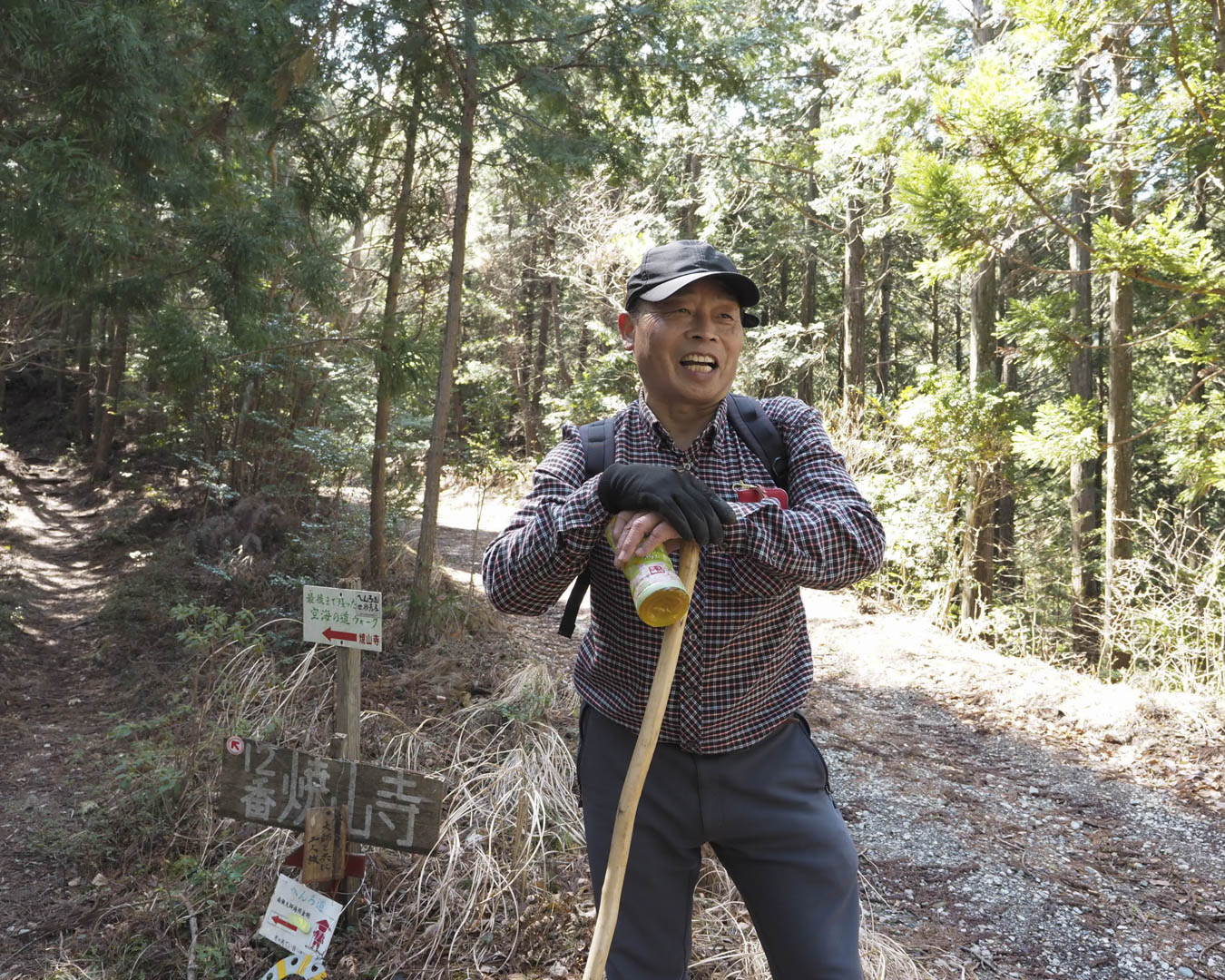
I had to listen to the old mans story as well.
The group listened attentively to the old mans service spirit as he told them about the sights of Tokushima City and Koyasan. He must have a lot of talkers, because he always gives laughter and energy to everyone he meets.
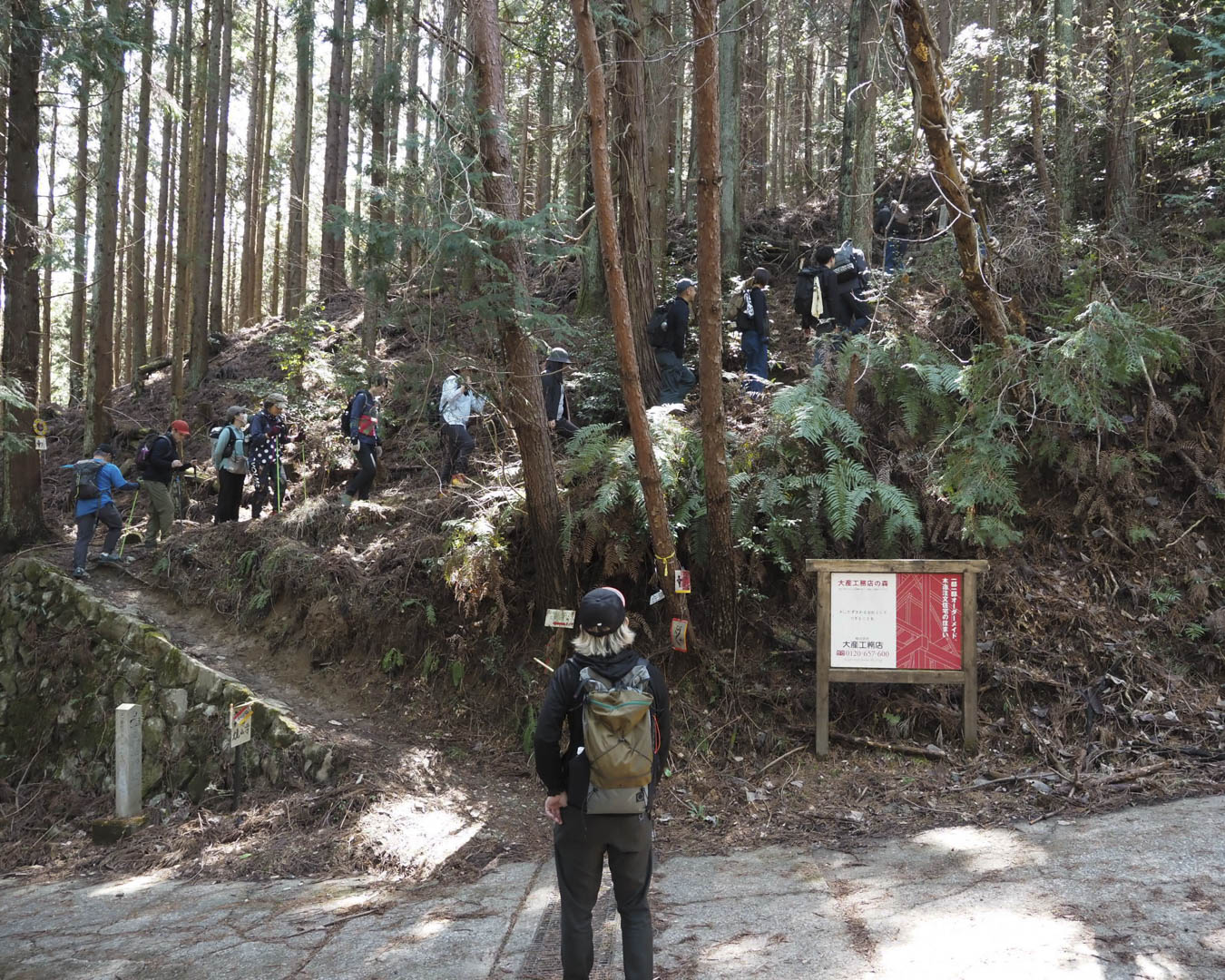
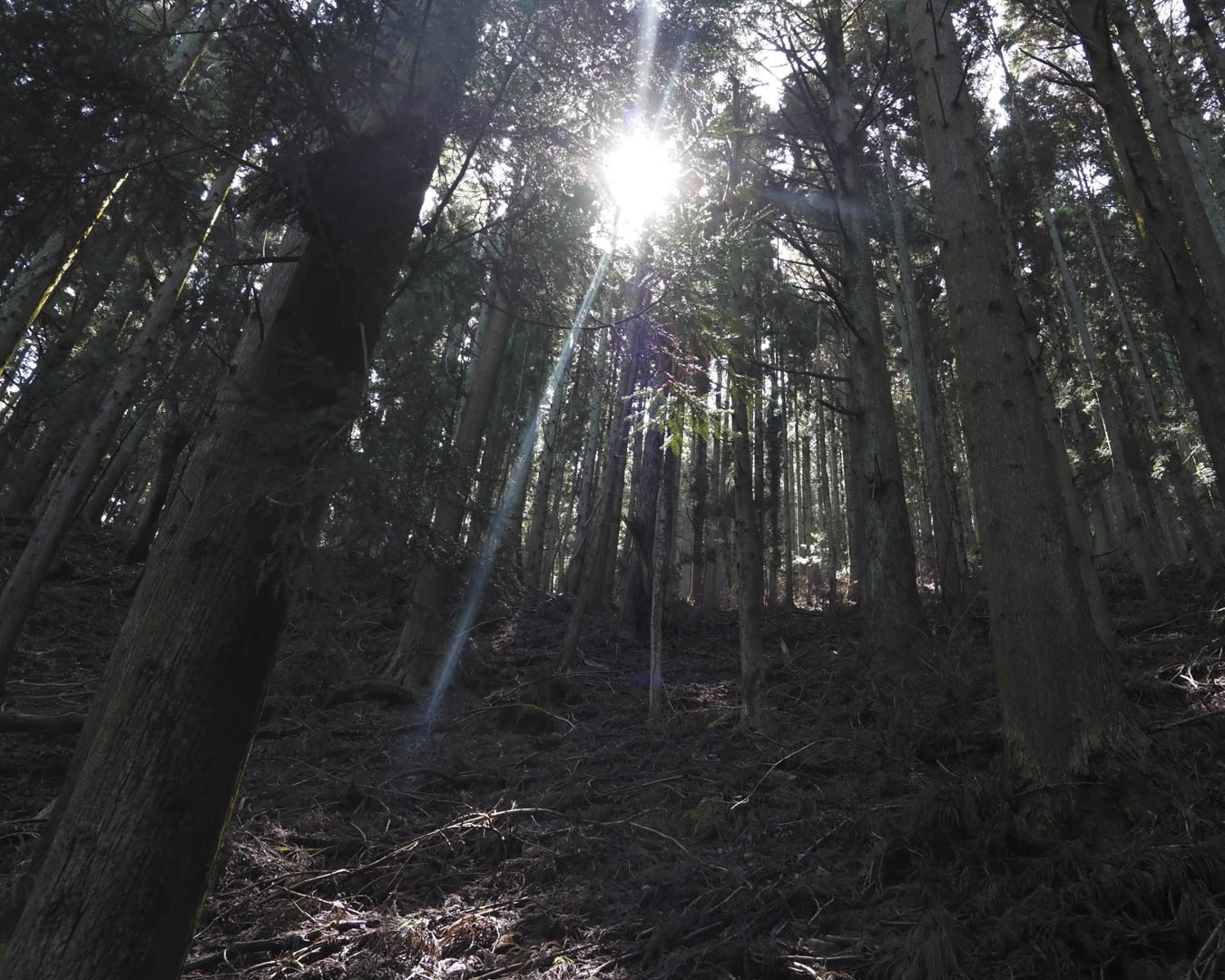
At the end of the tour, we all headed for Ipponsugi, the turnaround point. Cedars, cedars, cedars, so many cedars that hay fever sufferers were worried. After walking along the solemn pilgrimage route with the sun shining through the trees, we finally came upon a huge, majestic Ipponsugi cedar tree.

Underneath the huge cedar tree was a statue of Odaishi-sama.
It seemed to be welcoming us, and the members’ faces broke into a smile at the presence and sense of accomplishment. This magnificent Ipponsugi is said to have been planted by Odaishi-sama (there are so many “Odaishi-sama did 00” series in Shikoku).
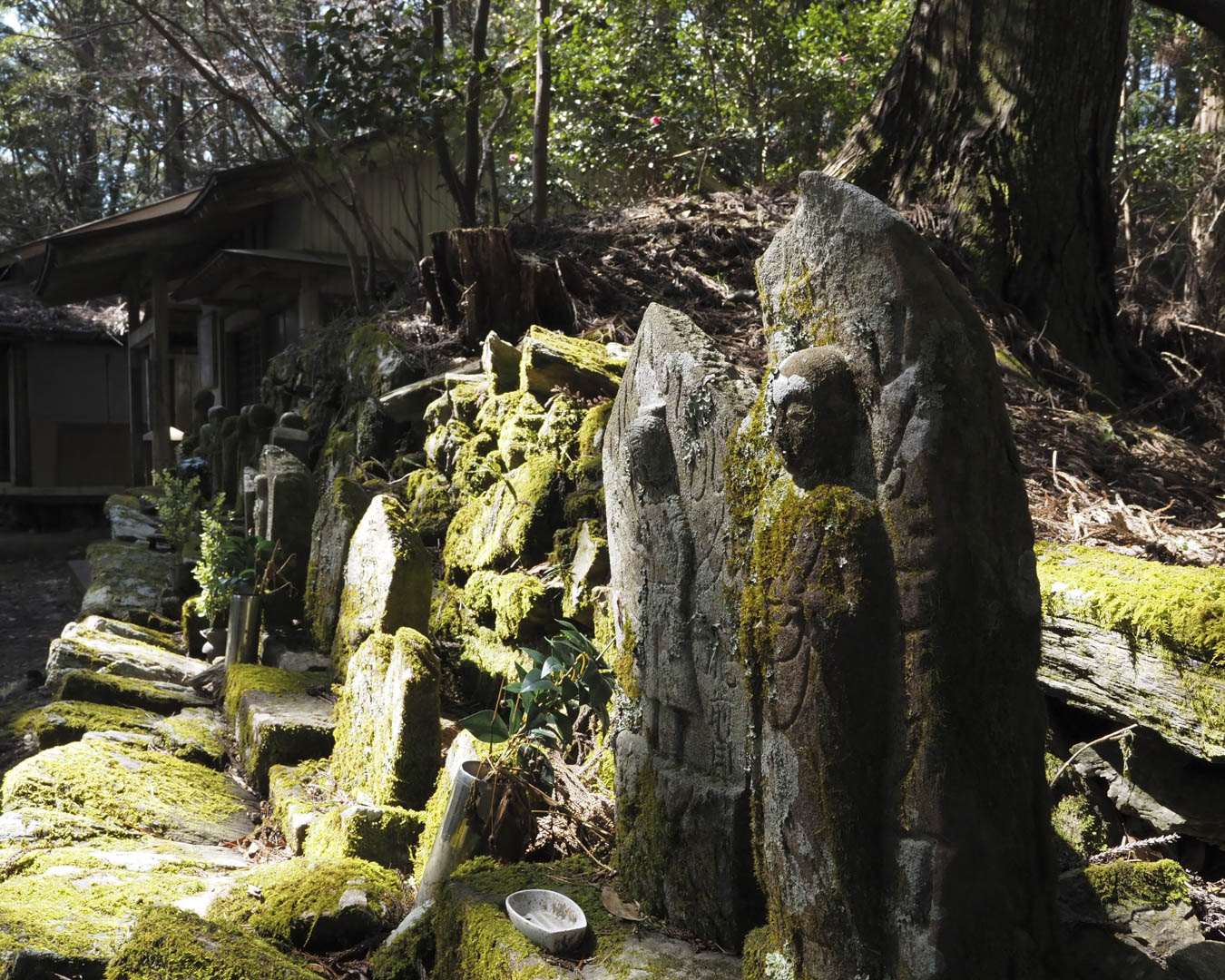
Opposite the single cedar, there are many Jizo statues. I felt the presence of life.
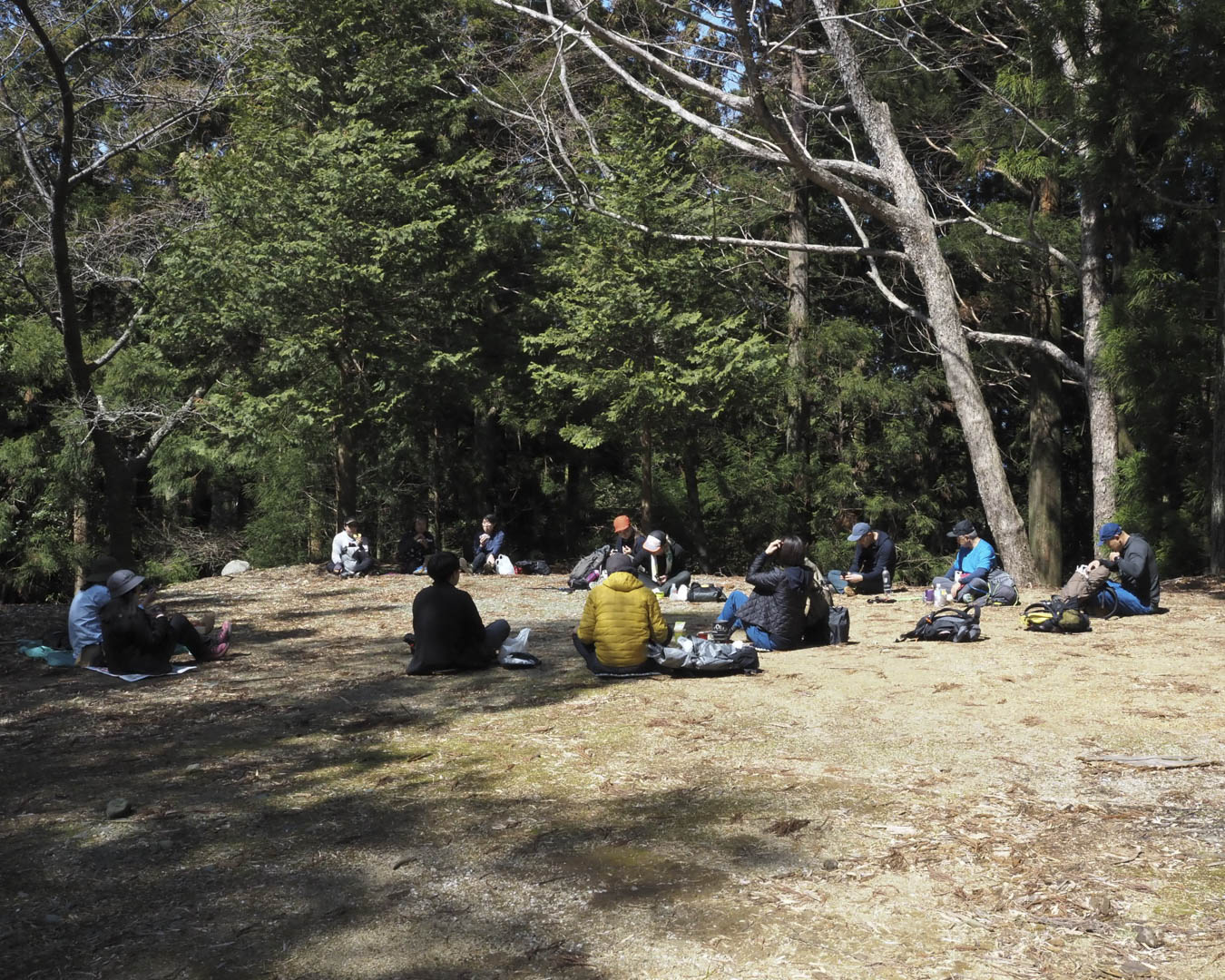
There was no one here but us.
We circled around the Ipposugi and marveled at how it was really just one tree, and then we formed another circle for a lunch break at the plaza in the back. While many of us had bought onigiri (rice balls) and cup noodles, one person brought his grandmother’s lunch box from home.

The love of family is evident in the visuals of the bento boxes.
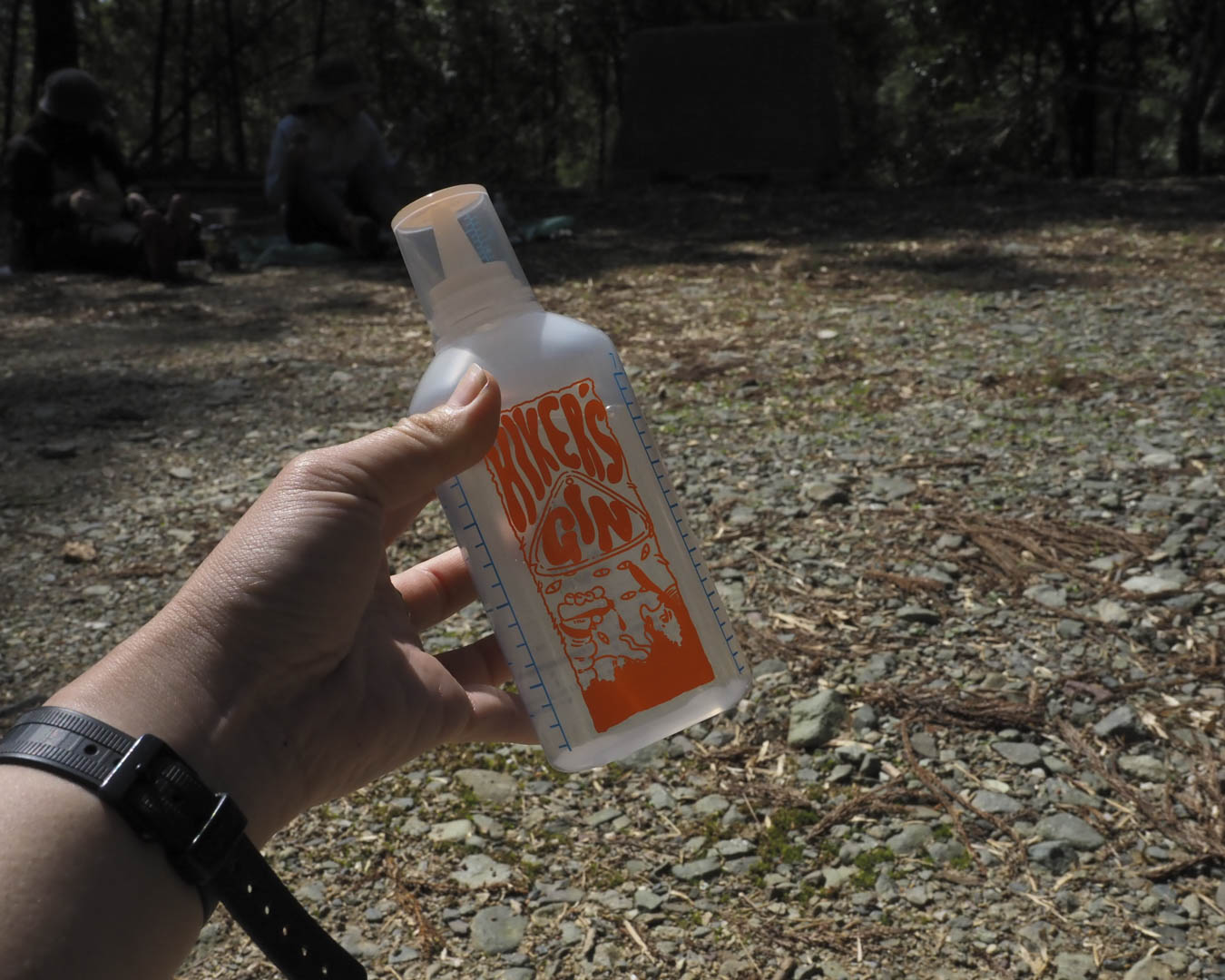
Hiker’s Gin, which will be available at the Mountain Path Festival, is light, strong, tasty, and recommended for hiking!

Group photo of everyone with Odaishi-sama!
What you can do for the trails in Shikoku
After the break, we descended the same route. The tension that was somehow present on the way there has eased up, and we are now zipping down the pilgrimage trail, which is fluffy with fallen leaves.

The broadleaf forest is soft and fluffy underfoot. I want to use it as fertilizer!
When we returned to Yanagisui-an, Mr. Sugano called out to us.
We are looking for ideas for Masuda-san and Henro no Sato. We want more people to use it, but the pilgrimage season is spring and fall, and there are quite a few times during the summer and winter when people don’t stop by.
The place is operated by Masuda-san and others with their personal funds and the proceeds from raising and selling killifish. It is a shame to waste such a nice place, so when Mr. Masuda entertains us again after we descend the mountain, could you give him some ideas? He suggested a restaurant or a swimming pool for children to play in.
Also, it seems that there are four old men who are mainly involved in this project now. They want to connect with the younger generation, so I thought it would be good if there was something we could do.
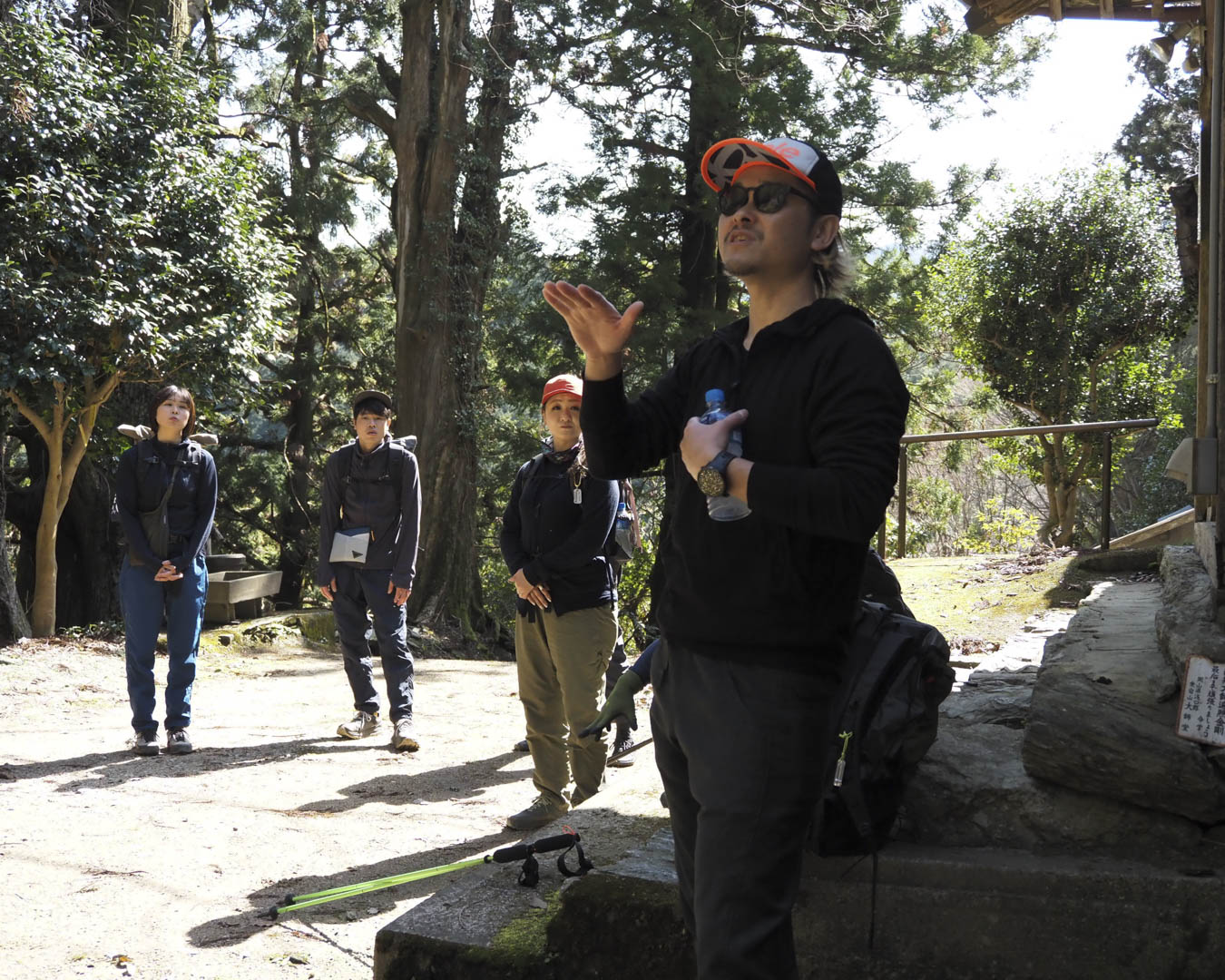
I think that’s what they were talking about at the time.
I thought it was a great idea to gather everyone’s ideas!
We talked about examples from around the country, and I said, “If you try participating first and have fun, you might want to be on the support side.” We talked about examples of volunteer events and keywords such as 「“Shikoku pilgrimage” and “ Shikoku Nature Trail” 」the “Michinoku Shiokaze Trail” in Tohoku, and we said, “If we have fun ourselves, we might want to come. If we ourselves enjoy the trail, people might want to come and do something….
*The long-distance nature trail is 1,647 km long. The starting point is Naruto City, Tokushima Prefecture, and the ending point is Itano Town, Itano-gun, Tokushima Prefecture. The trail allows visitors to walk around Shikoku while becoming familiar with Shikoku Sacred Sites and the nature and history that are scattered throughout the region.
The best way is to have visitors walk around the area,” said Mr. Itano. Even if everyone sees the same thing, they will feel differently. This is just another opportunity,” says Okazaki.
Mr. Kanno then suggested that after the tour, each participant share his or her impressions of the tour with Mr. Masuda.
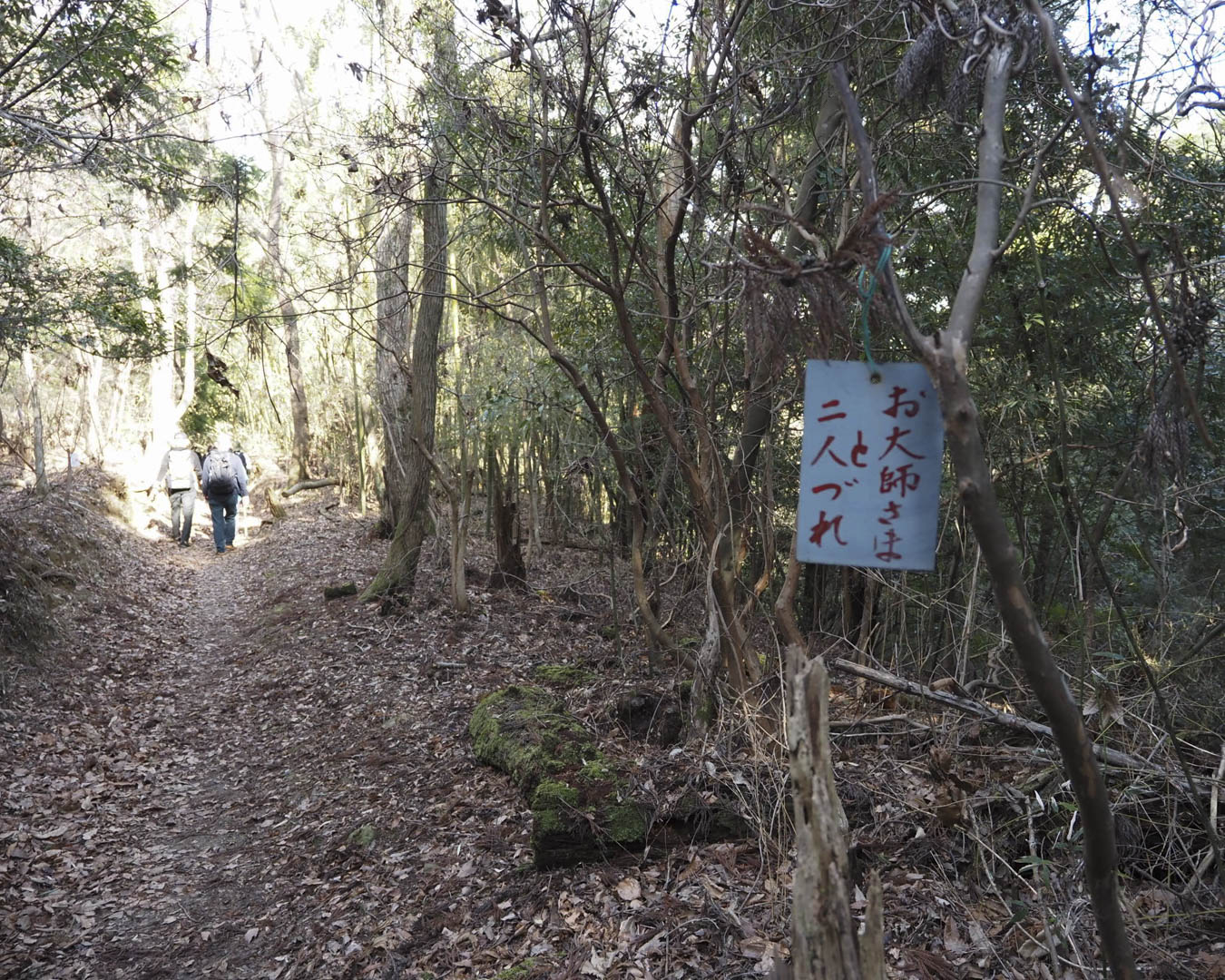
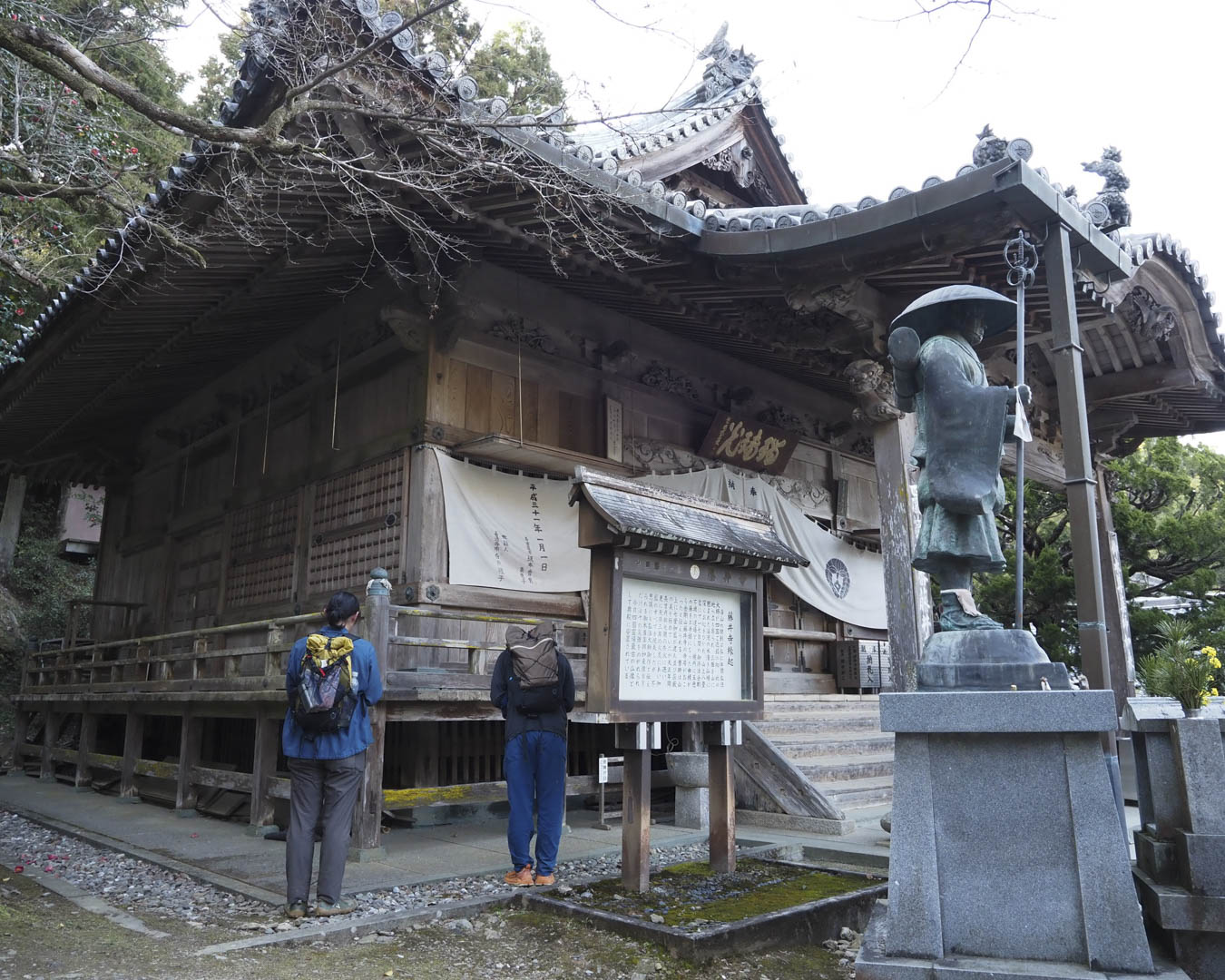
Some members had a little leg pain, but everyone made it back down the mountain safely! We paid another visit to Fujiidera Temple.
Mr. Okazaki was considerate of others when he paid homage from this position instead of the front of the hall of worship. He said, “I can worship to my heart’s content, and it will lead me to accumulate merits.
He said, “It is important to do everything with a humble heart and with a sense of self-worth, and that is what faith is all about.
I see. Every word and action of Mr. Okazaki makes sense, and it is clear that he is filled with gratitude.
Once again, we headed back to “Henro no Sato,” where Masuda-san was waiting for us. Each of us shares our feelings and ideas of the day.
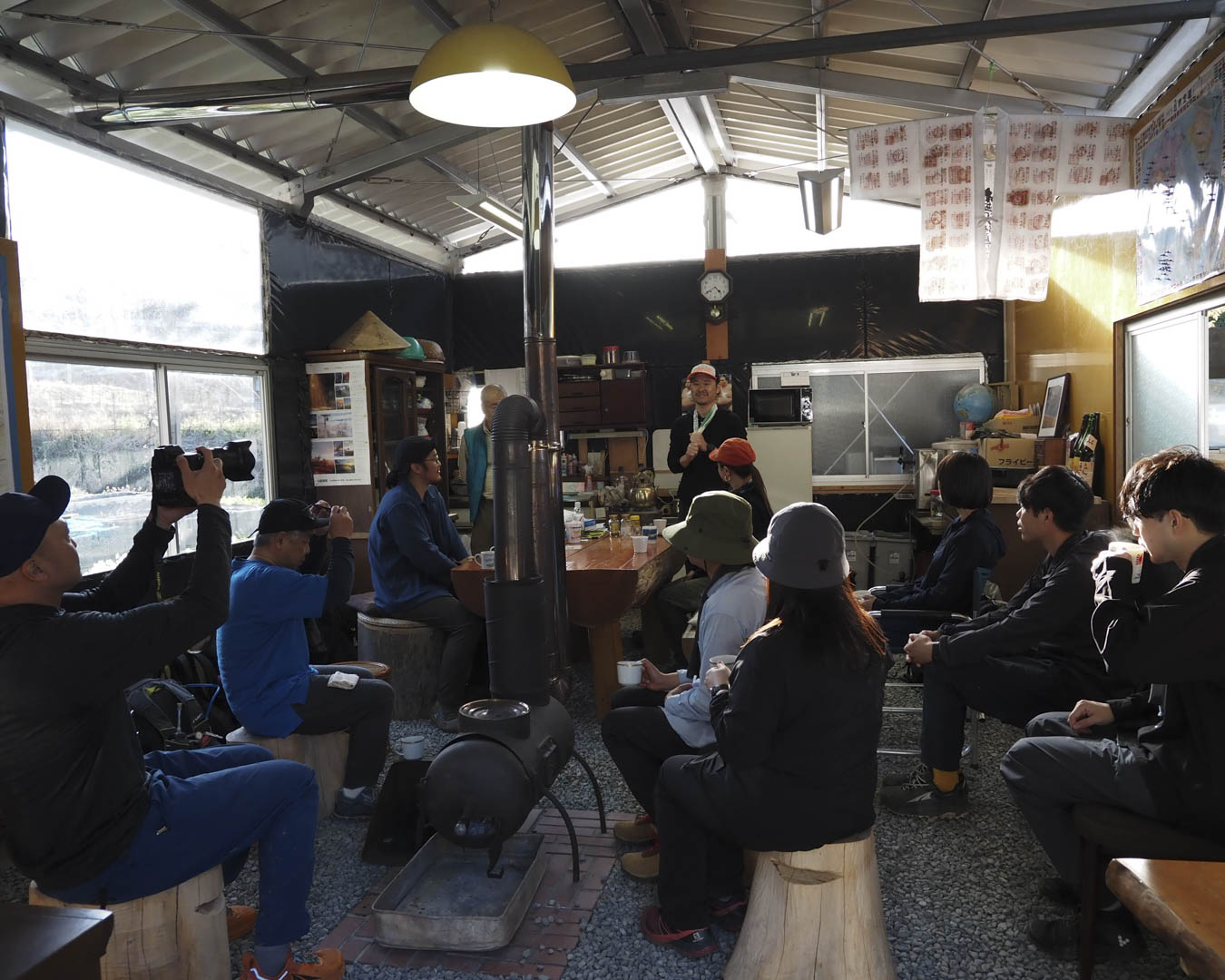
We have drinks again and take a breather.

She works at a bakery in Ehime and is a volunteer staff member of the Yamato Festival.
I didn’t expect the trails to be so beautiful and easy to walk on,” she said. I am grateful to the people who take care of it. I’ve always been interested in long trails, but today was so much fun that I decided I’d like to try the pilgrimage one day.
One of the participants, who has been walking in low mountains recently, continued, “I like the ‘Cape Meguri no Michi Course’ in Kagawa on the Shikoku Nature Trail, and I wonder if I can help connect the pilgrimage culture as well by sharing information about the pilgrimage route, even if only in a small way.
Two participants from Kochi commented, “I learned about the history of the pilgrimage and had a great walk, so I would like to walk another pilgrimage route in the near future.”
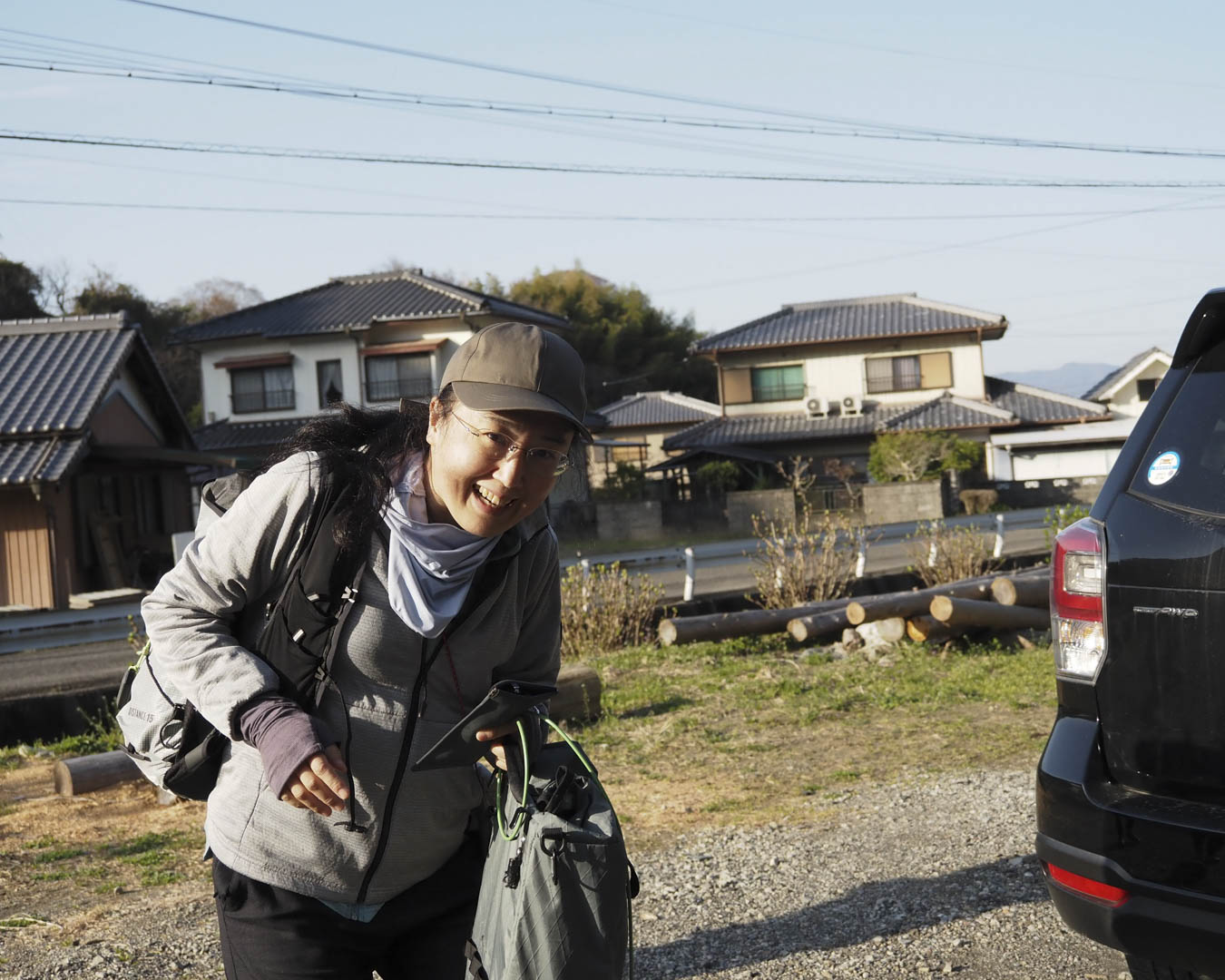
The members from Kyoto said, “It was a fun time and I was glad to walk the pilgrimage with everyone. I will come back to Shikoku!” and, in time for the train, headed home one step ahead of the others.
Mr. Manabe, who dropped her off, said, “Well, it was a nice trail. I would like to walk this path again with the local Kamiyama members and get to know the footprints of Shikoku better.”
It was like a connection between each person’s daily life and the pilgrimage path.
One idea that came to mind was to build a sauna here, where people could drown themselves in the clean river. We could drown ourselves in a clean river. I was happy to hear Kimura, a Yamatomichi staff member, say something good from an outsider’s point of view.
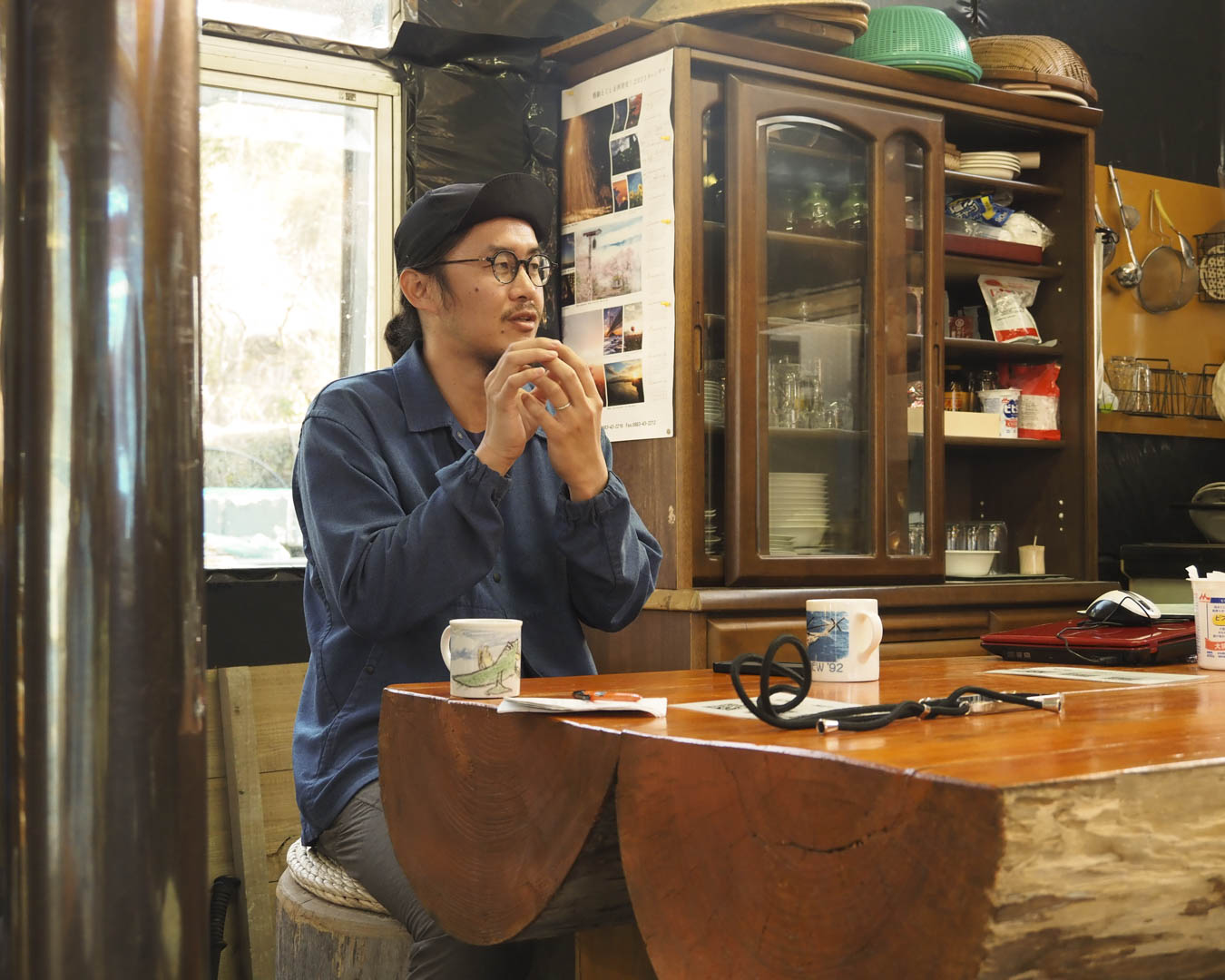
I think the charm of the HLC is the chance to meet people from all over the world, and I felt that even more strongly in Shikoku this time. I learned that many people are involved in the mountains, and I think the appeal of Shikoku is that there are so many people who are kind to others, who think, ‘I wonder if I can do something, too. I am also very interested in Shikoku, and after the Yamamichi Festival is over, I would like to spend some time walking around Shikoku.

Lastly, Mr. Masuda.
It’s been five years since we started this place. My partner and I are both 73 years old, and the question of what to do with the place in the future is a great challenge for us, so I asked everyone to share their thoughts. I hope it will go in the right direction.

By the way, I’m a data freak. 15% of the people who come here change their shoes because of the steepness of the trail. There are people who climb in sandals, and I even drive to town to buy them. …… is so interesting that I can’t finish it (laughs).

This is the “Shikoku 88 Pilgrimage Ambassador Appointment Certificate” issued here, a valuable certificate given only to those who have completed a walking pilgrimage to 88 pilgrimage sites. Unsigned, Mr. Masuda tried to give it to me as a commemorative gift on my way home.
No, no, no, Mr. Masuda, I appreciate the sentiment, but I’ll accept it after I finish walking the entire route myself with gusto…
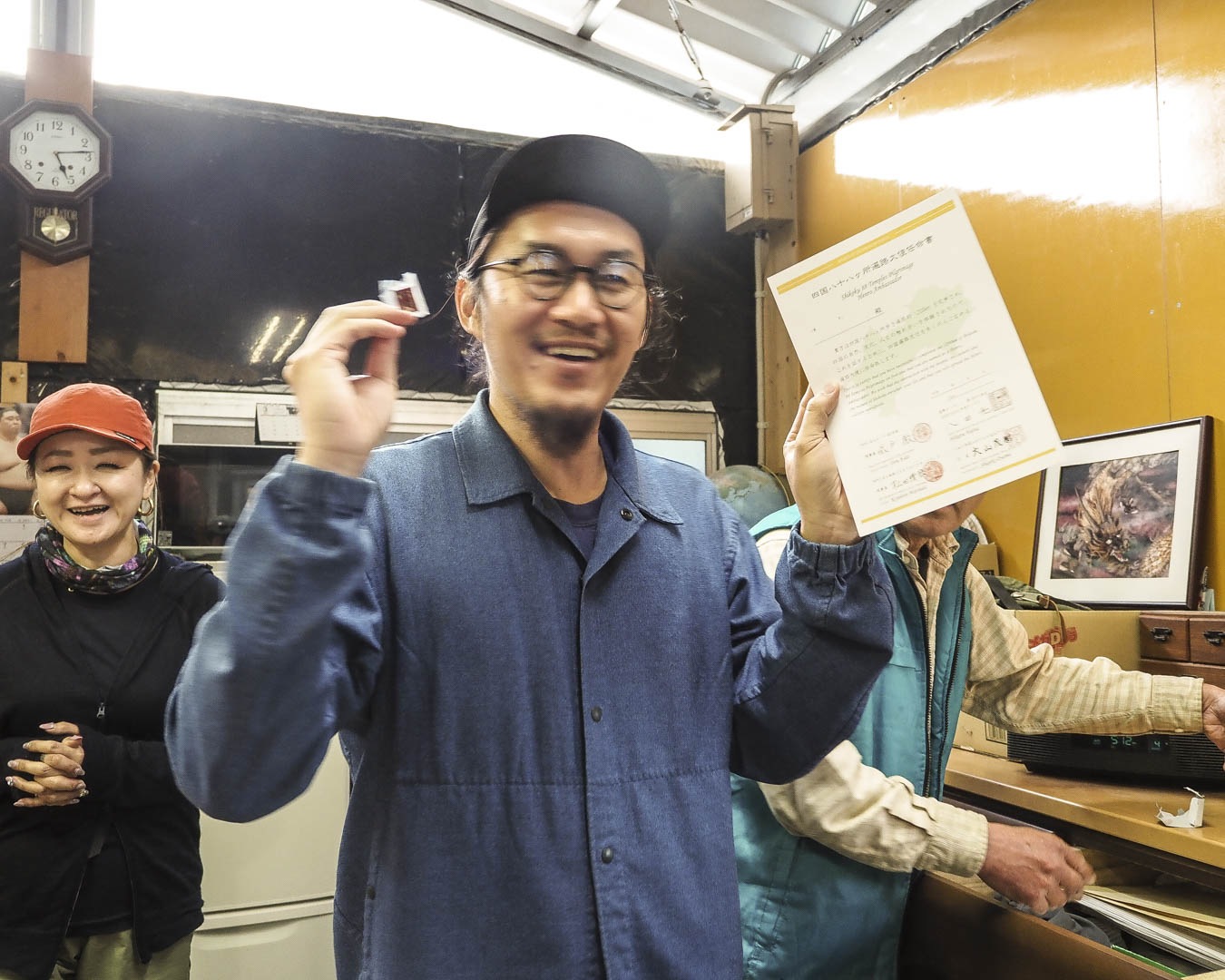
That’s a nice souvenir!
This time, I was able to see Shikoku in a new light by practicing the HLC’s local study hiking program.
The pilgrimage paths are not only marked by pilgrims, but also by the presence of people who protect the beauty and safety of the paths, and I was able to meet them in person when they were working. After walking the route, I finally feel my enthusiasm for the Shikoku pilgrimage has increased. A little, but clearly.
After the interview, I listened to podcasts about Kukai (Odaishi-sama) and Buddhism, looked at gear from the perspective of walking the pilgrimage route, saying “I could use this,” and read books about the history of the pilgrimage.
And most of all, I’ve become more proud of the fact that there is a path that has been going on for 1200 years, and I feel more in love with Shikoku and want to show people who come to visit me around.
It was a very long story. I hope you enjoyed!
Stay tuned for the next HLC Local Study Hike.








